Thermaltake Toughpower DPS G RGB 850W PSU Review
In addition to its flagship Titanium line, Thermaltake also equipped the DPS G Gold family with an RGB fan. The highest-capacity model outputting up to 850W is our test subject today.
Why you can trust Tom's Hardware
A Look Inside And Component Analysis
Parts Description
Before proceeding with this page, we strongly encourage you to a look at our PSUs 101 article, which provides valuable information about PSUs and their operation, allowing you to better understand the components we're about to discuss. Our main tools for disassembling PSUs are a Thermaltronics soldering and rework station, and a Hakko FR-300 desoldering gun.
| General Data | |
|---|---|
| Manufacturer (OEM) | Channel Well Technology (CWT) |
| Platform Model | CSH LED |
| Primary Side | |
| Transient Filter | 4x Y caps, 2x X caps, 2x CM chokes, 1x MOV |
| Inrush Protection | NTC Thermistor & Relay |
| Bridge Rectifier(s) | 2x GBU806 (600V, 8A @ 100°C) |
| APFC MOSFETs | 2x Vishay SIHF22N60E (650V, 13A @ 100°C, 0.18Ω @ 25°C) |
| APFC Boost Diode | 1x CREE C3D08060A (600V, 8A @ 152°C) |
| Hold-up Cap(s) | 1x Nippon Chemi-Con (400V, 560uF, 2000h @ 105°C, KMR) |
| Main Switchers | 2x Vishay SIHF22N60E (650V, 13A @ 100°C, 0.18Ω @ 25°C) |
| APFC Controller | Infineon ICE3PCS01 & CM03X |
| Resonant Controller | Infineon ICE2HS01G |
| MCU | Microchip PIC32MX230F064D (40 MHz, 64KB Flash, 13x analog channels, 10-bit ADC, USB interface) |
| Serial EEPROM | Microchip 24LC02BI |
| Topology | Primary side: Half-Bridge & LLC Resonant Converter Secondary side: Synchronous Rectification & DC-DC converters |
| Secondary Side | |
| +12V MOSFETs | 6x Sinopower SM4021NA (40V, 100A @ 100°C, 2.7mΩ) |
| 5V & 3.3V | DC-DC Converters: 6x UBIQ QM3006D (30V, 57A @ 100°C, 5.5mΩ) PWM Controller: Anpec APW7159C |
| Filtering Capacitors | Electrolytics: Nippon Chemi-Con (105°C, KY, KZE), Nichicon (105°C) Polymers: APAQ, Elite |
| Supervisor IC | Weltrend WT7502 (PG, OVP, UVP, OCP, SCP) |
| Fan Model | Thermaltake TT-1425 (Hong Sheng OEM, A1425L12S, 140mm, 12V, 0.30A, 1560 RPM, hydro-dynamic bearing) |
| 5VSB Circuit | |
| Primary FET | 1x UTC 3N60L-TN3-R (600V, 3A @ 25°C, 3.6Ω) |
| Auxiliary FET | 1x Sinopower SM3117NSUC (30V, 50A @ 25°C, 9.8mΩ) |
| Standby PWM Controller | On-Bright OB5269CP |

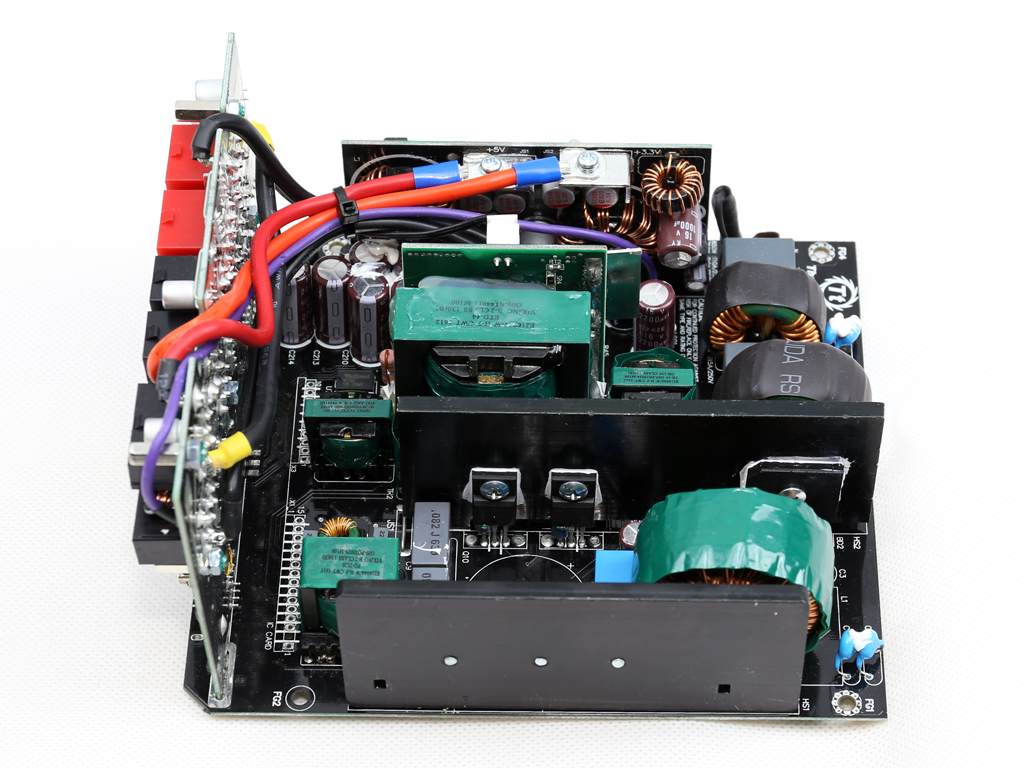
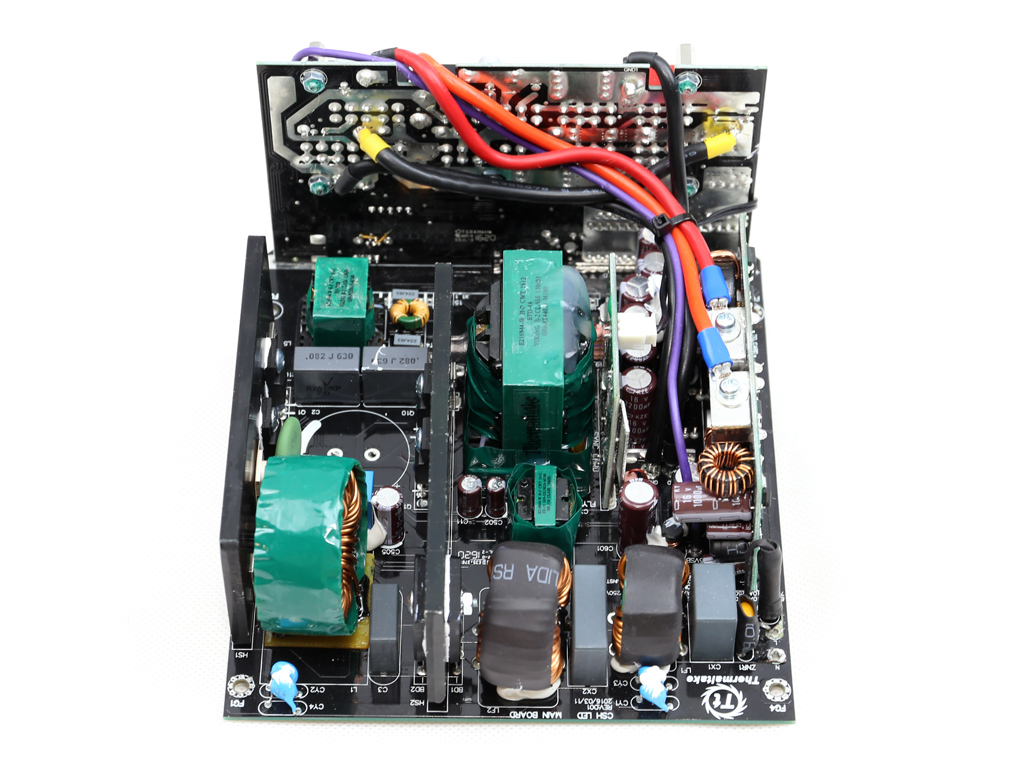
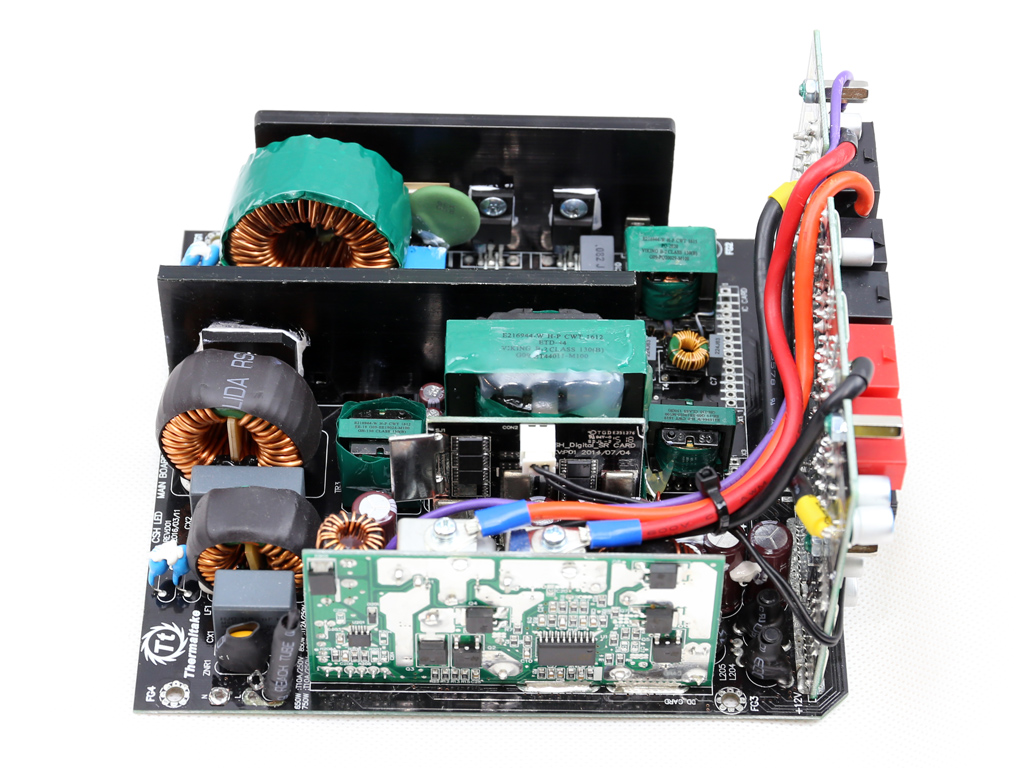
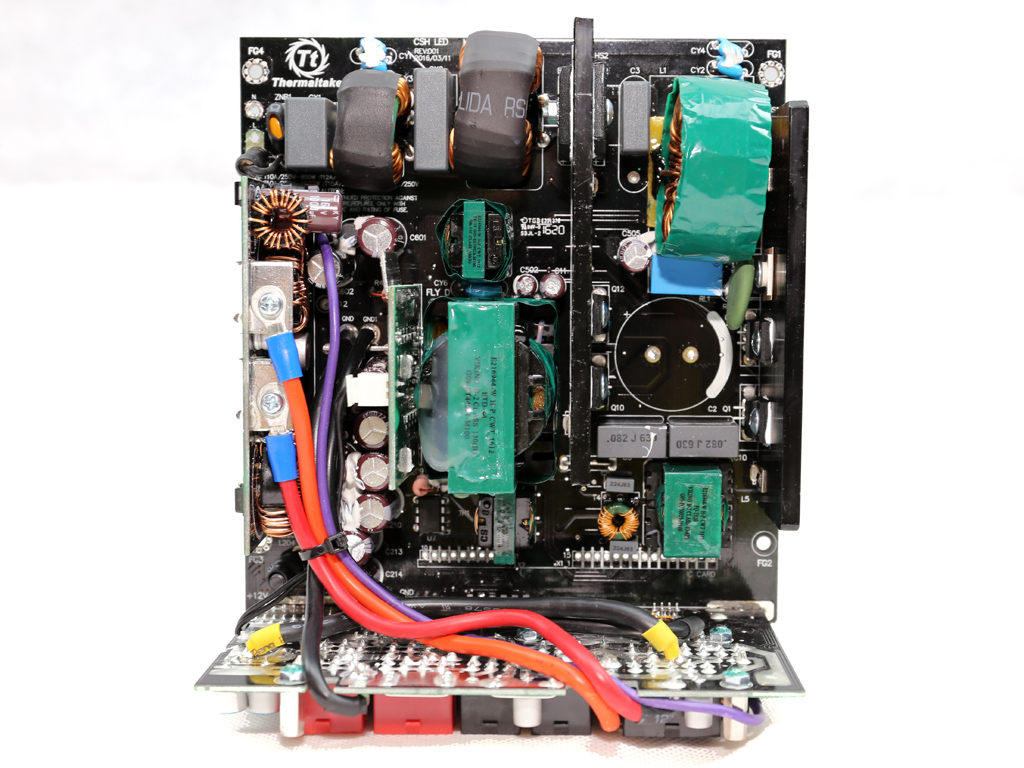
This CSH LED platform is built by CWT, and it looks similar to the one Corsair uses for the HXi and RMi families. However, there are several differences since CWT implemented a custom design for Corsair that hasn't been used elsewhere. The platform looks a little outdated, mostly because of the cables used to transfer power to the modular board. In contemporary, high-end implementations, those are replaced by either thick PCB traces or bus bars. At the same time, the VRMs that generate the minor rails are installed much closer to the modular board, minimizing energy losses.
We had to desolder some parts in order to identify the vital components. So, besides the bulk cap, the daughterboard that hosts the PFC and resonant controllers had to go as well. CWT uses quality electrolytic caps in this unit, while the polymer caps come from second-tier manufacturers since they are more resilient to heat. Normally we expect polymer and electrolytic capacitors from Japanese manufacturers in such an expensive PSU.

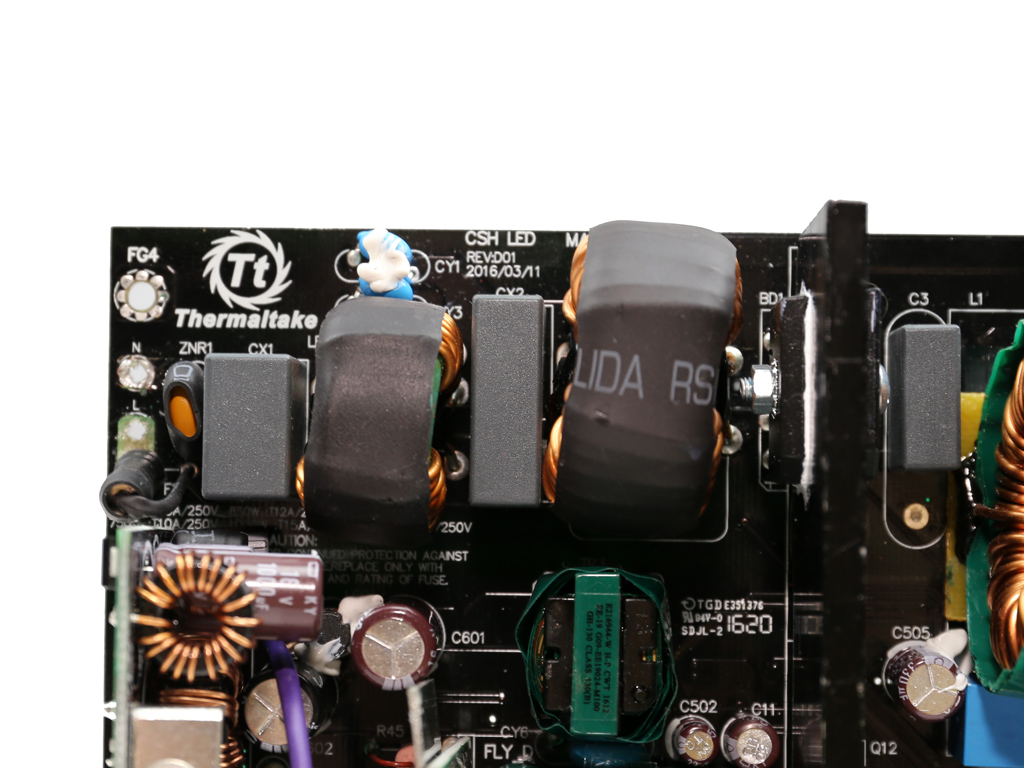
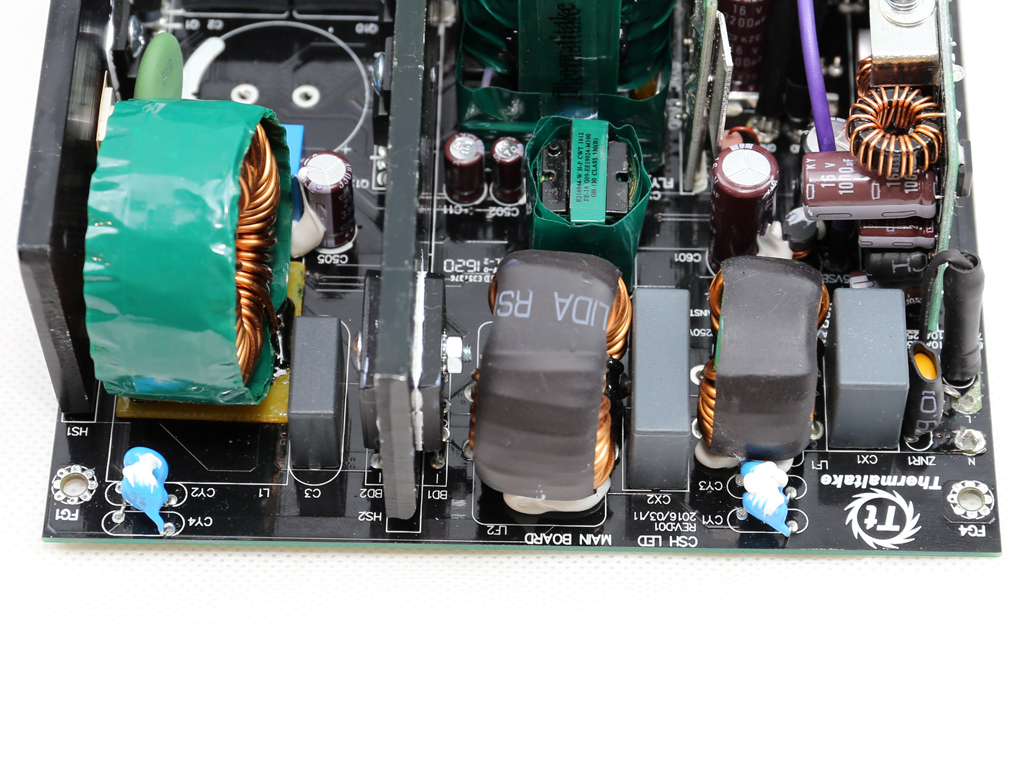
The AC receptacle only hosts two Y caps; the EMI filter's other parts are installed on the main PCB. Those include two additional Y caps and two X ones, two CM chokes, and an MOV. There is also an NTC thermistor that protects against large inrush currents and a bypass relay, which isolates it once the start-up phase ends.
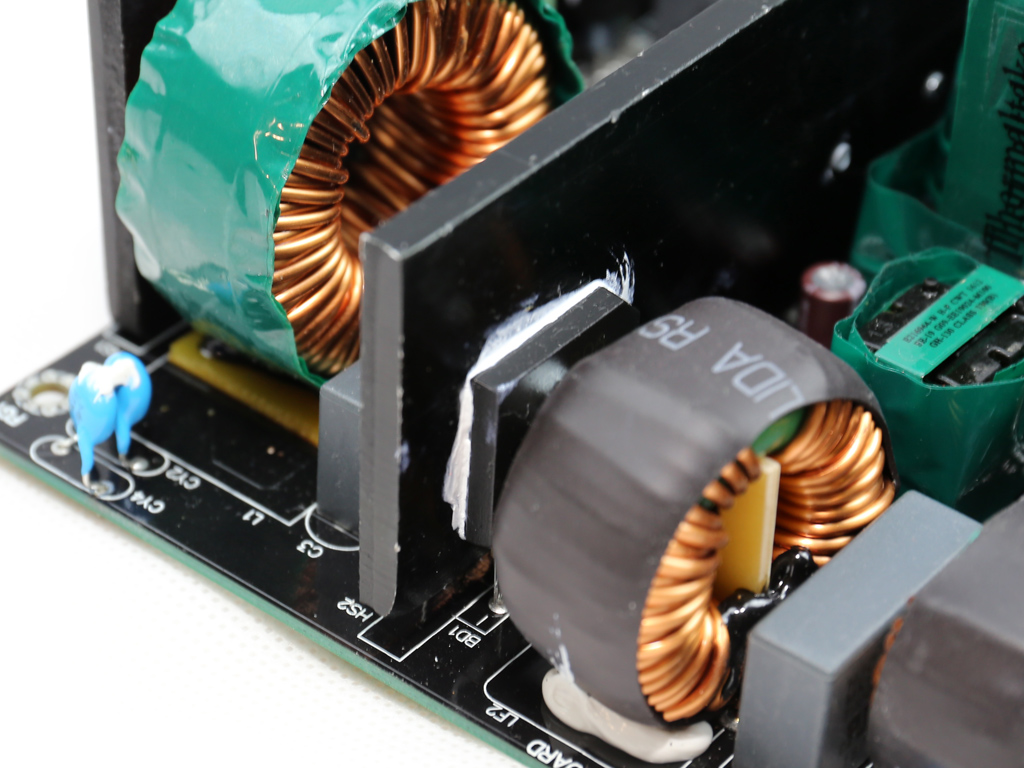
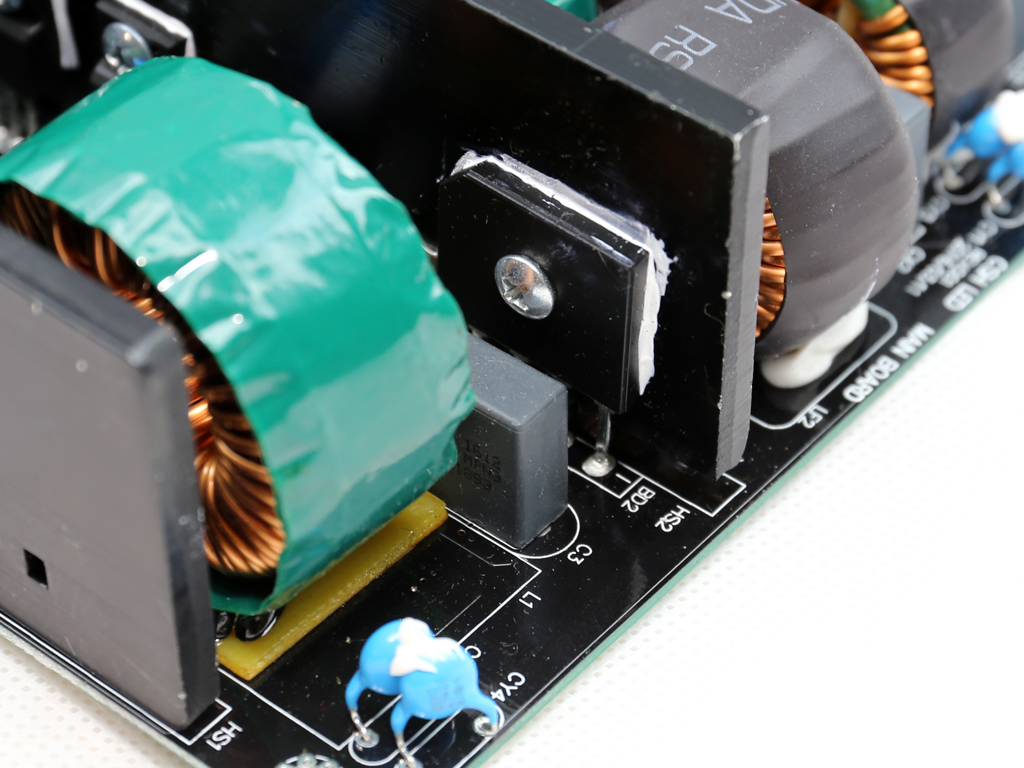
The bridge rectifiers, two GBU806s, are installed on the primary heat sink. They can handle up to 16A of current combined, so they will definitely meet this PSU's demands.
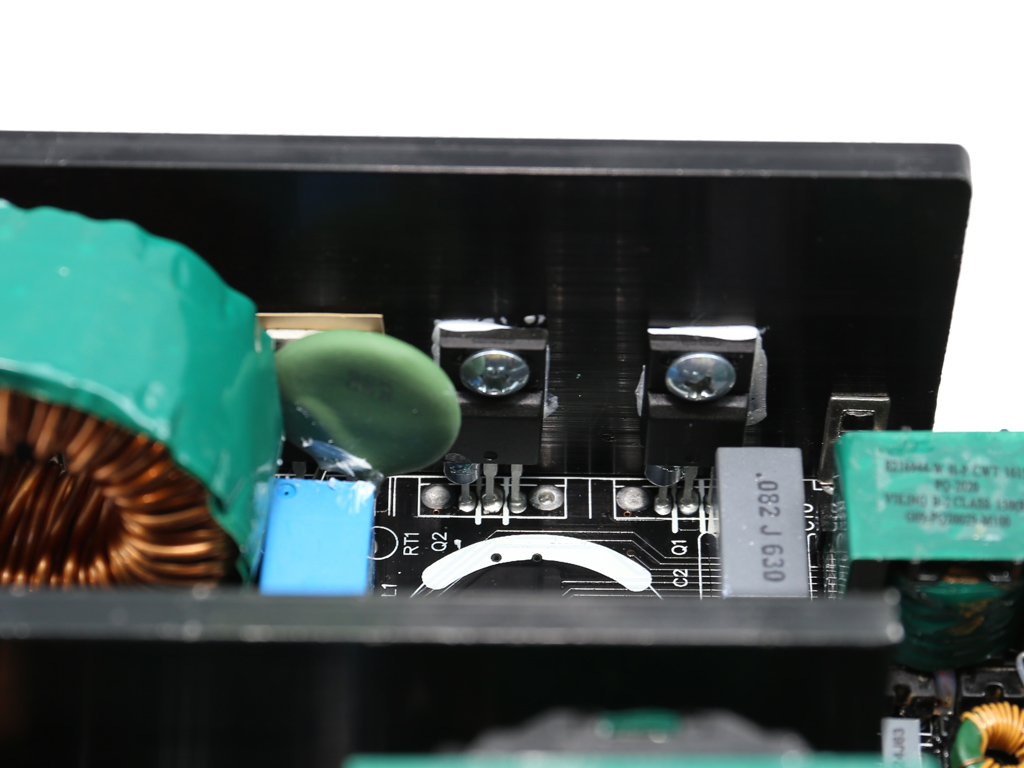
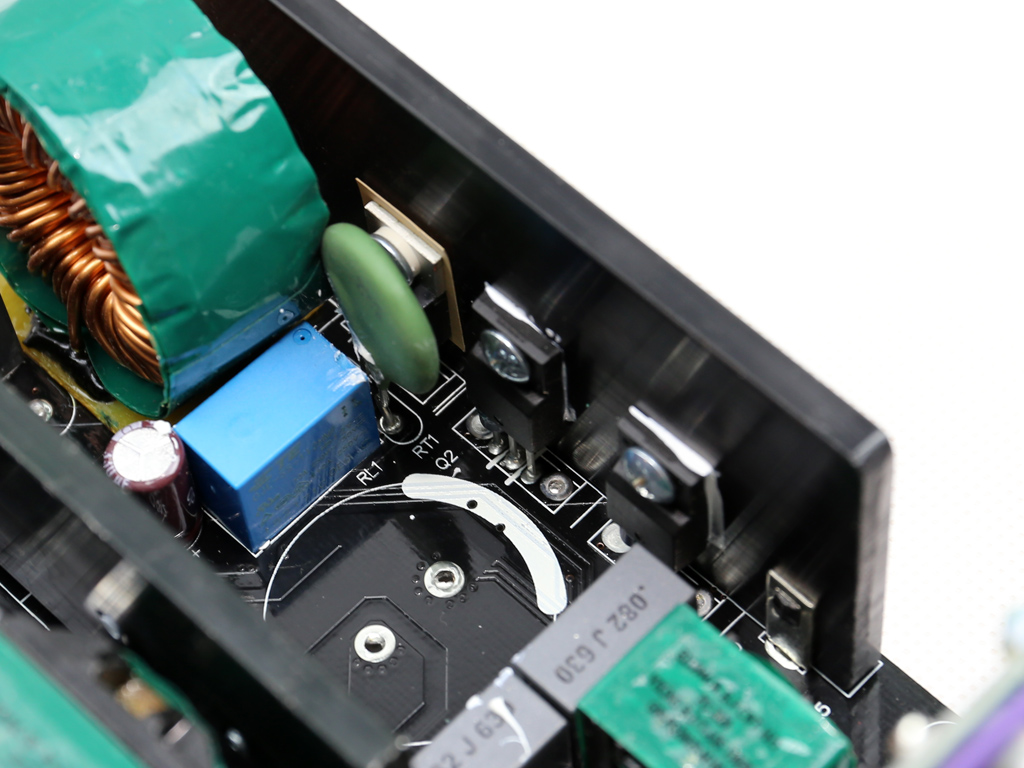
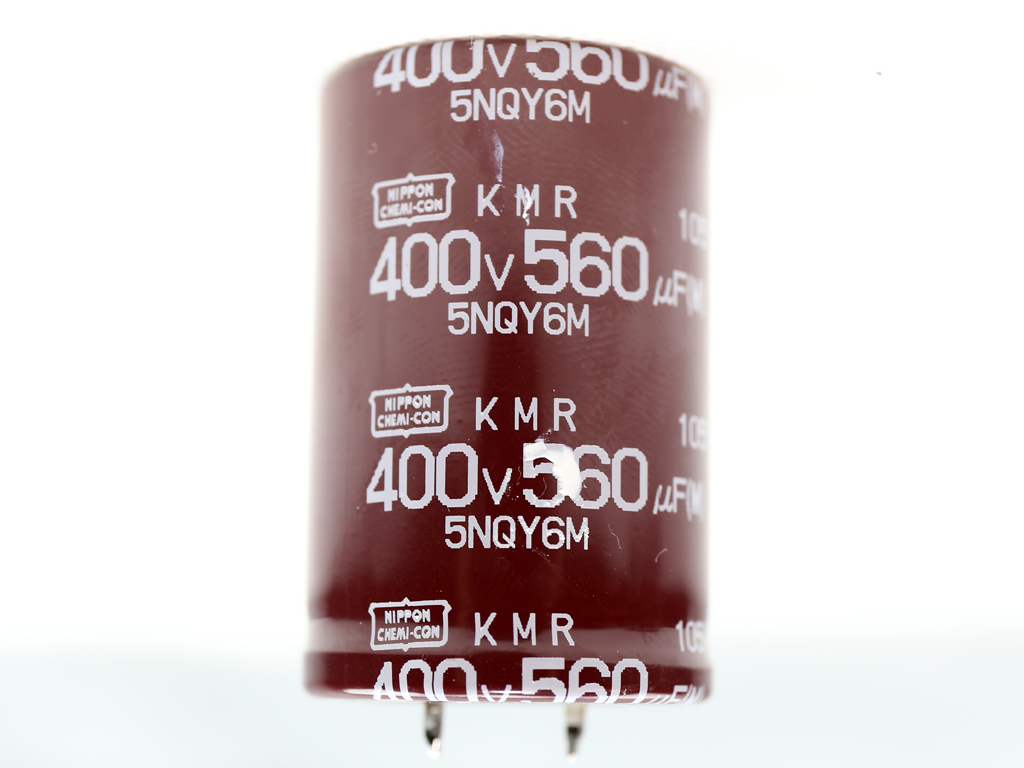
In the APFC converter, two Vishay SIHF22N60E FETs along with a single CREE C3D08060A boost diode shape the input current waveform to make it proportional to the mains voltage waveform. Only one bulk cap is used, and its capacity (560uF) is small for a 850W PSU. On the other hand, it is provided by Chemi-Con and rated for 105°C, so it should last a long time under normal operating conditions.
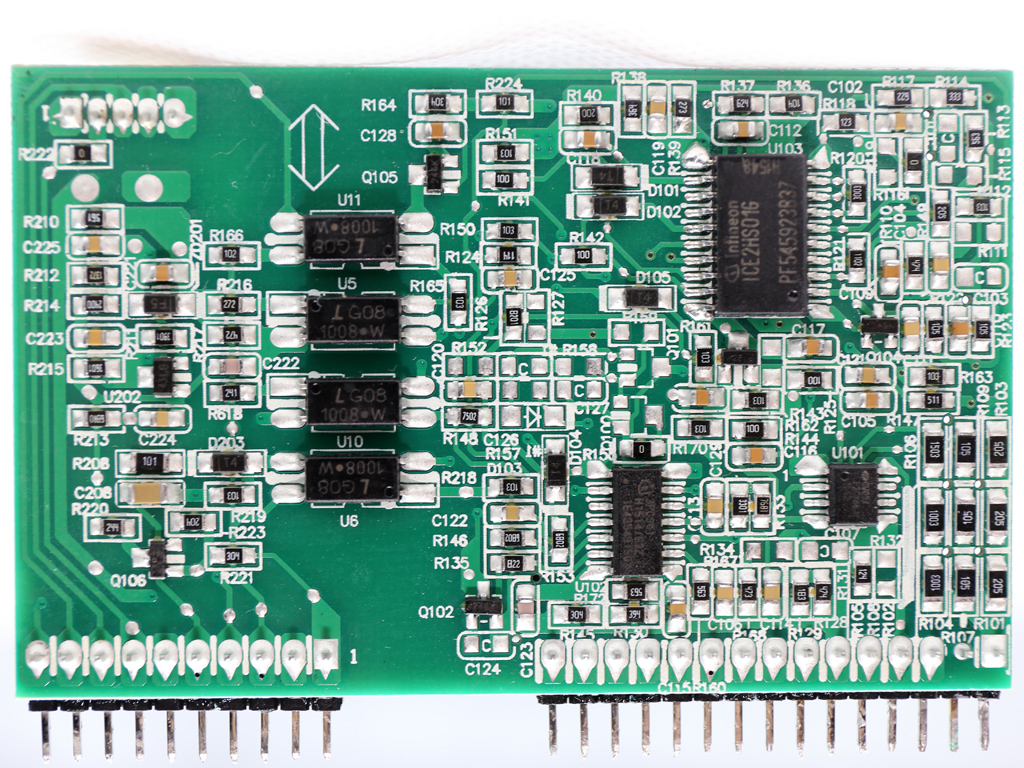
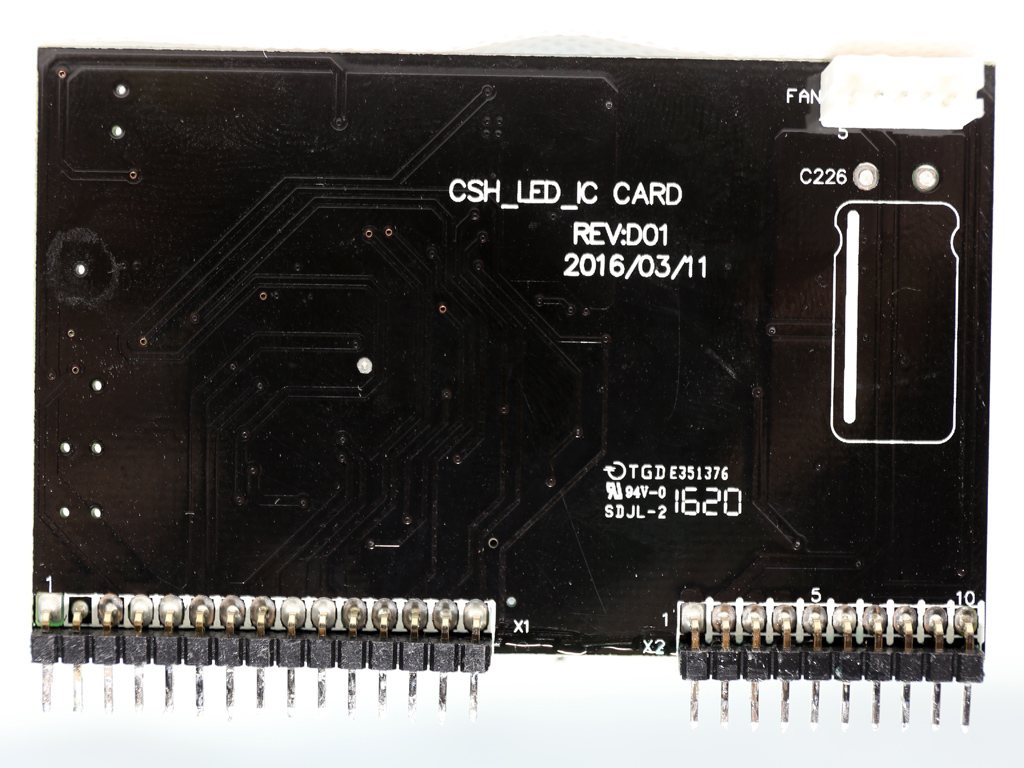
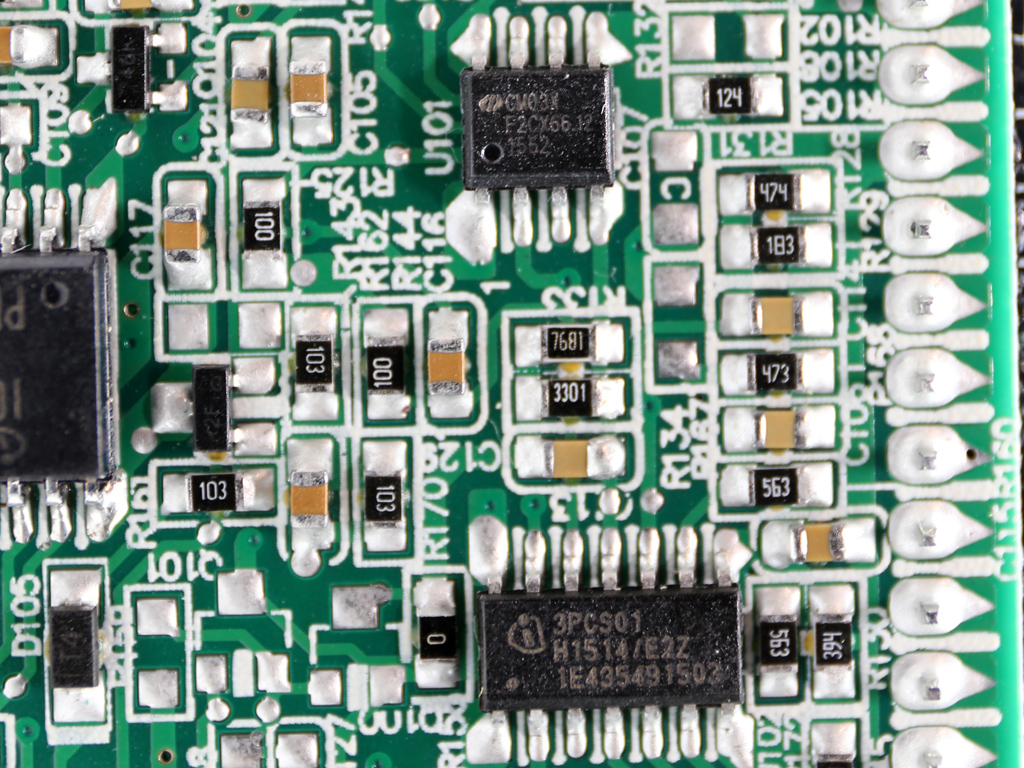
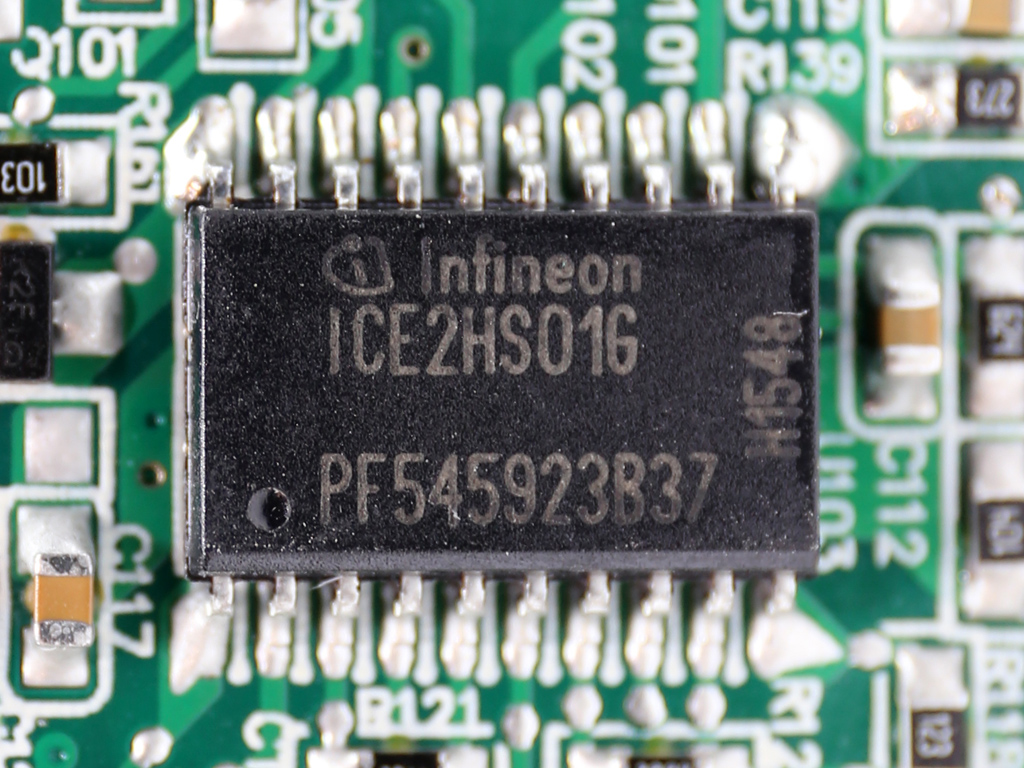
The PFC controller is an Infineon ICE3PCS01. It is supported by a CM03X Green PFC controller that restricts power consumption in standby. Both of the aforementioned controllers are housed on a vertical daughterboard, which also hosts the resonant controller, an Infineon ICE2HS01G IC.
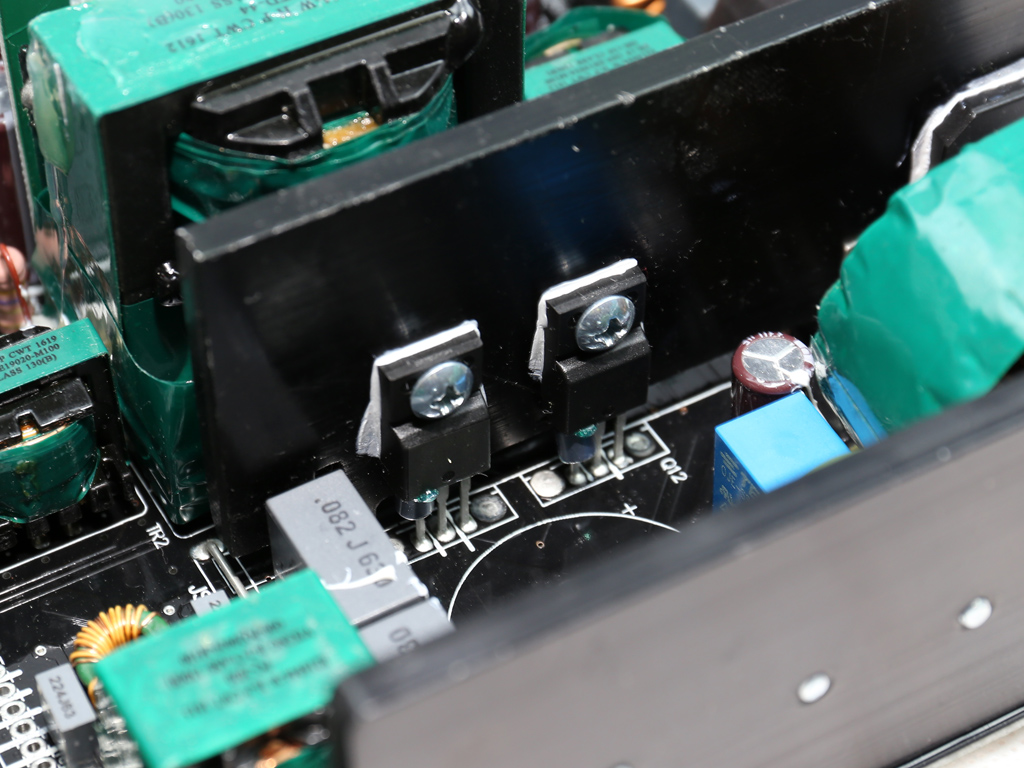
The primary switching FETs are two Vishay SIHF22N60Es, which are configured in a half-bridge topology. As usual, an LLC resonant converter is used to boost efficiency, though in this PSU we can't say it does a good job.
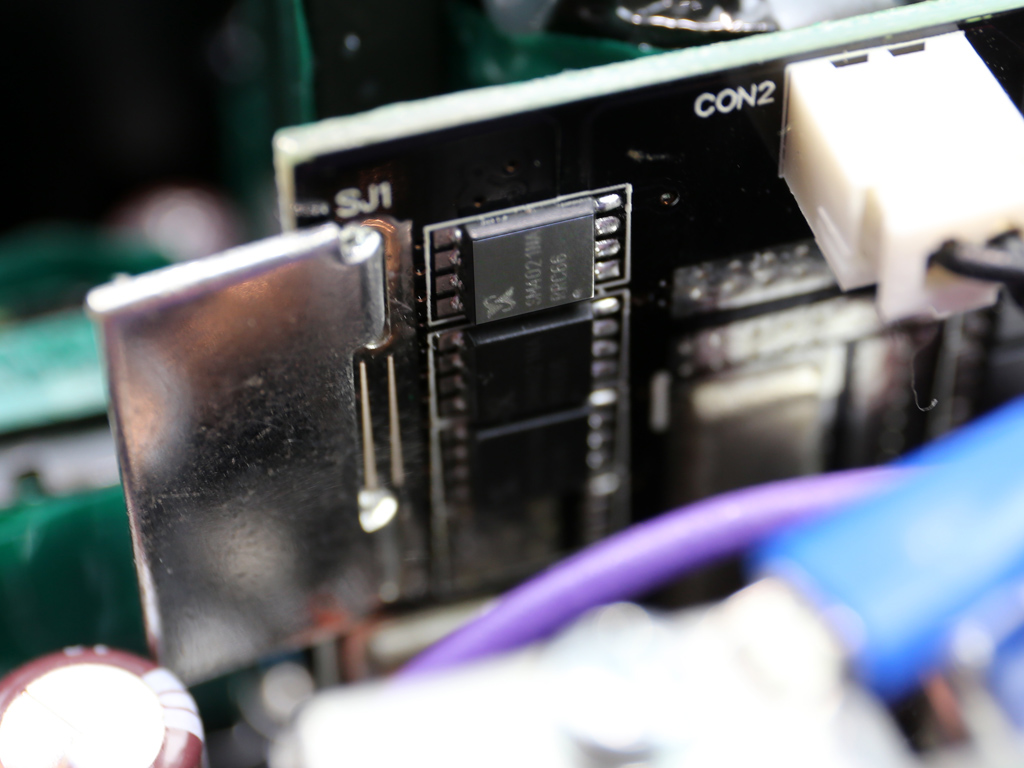
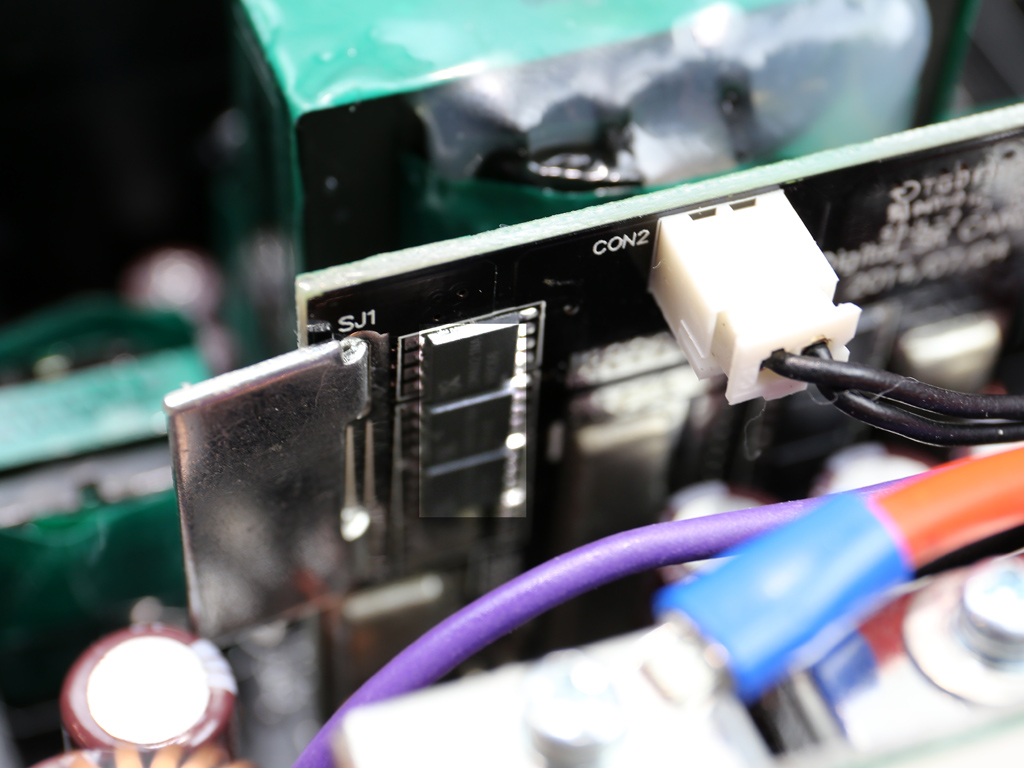
On the secondary side there are no heat sinks, since the +12V FETs are cooled by several bus bars and the main PCB's enhanced copper traces. Six Sinopower SM4021NA FETs regulate this rail.
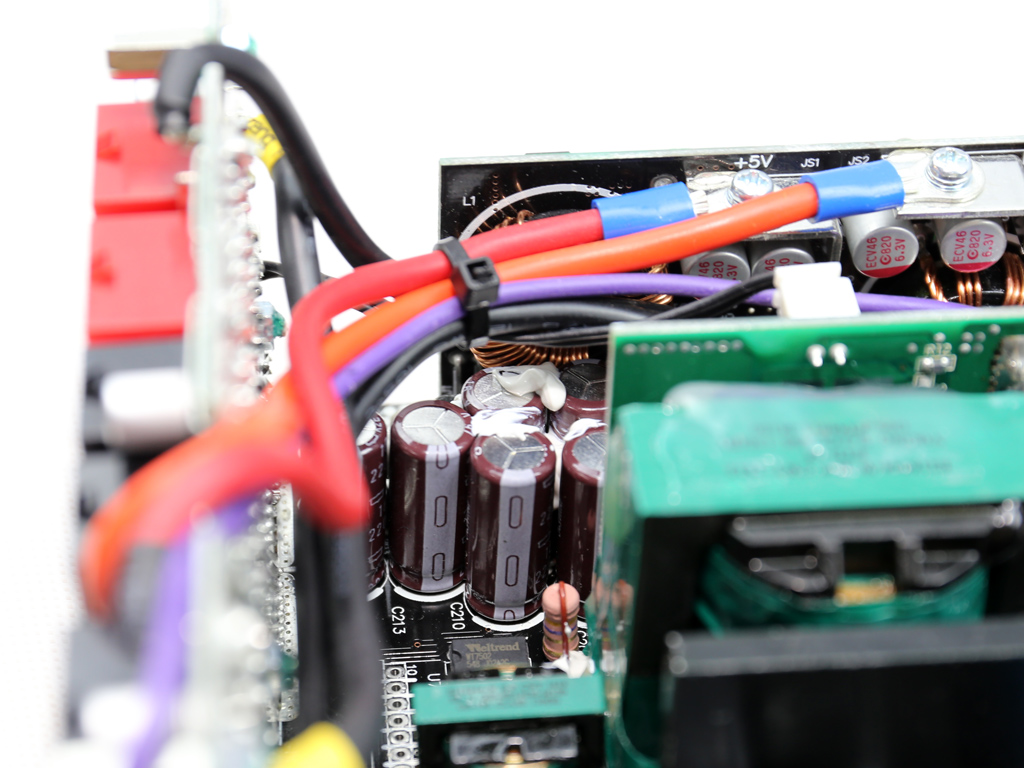
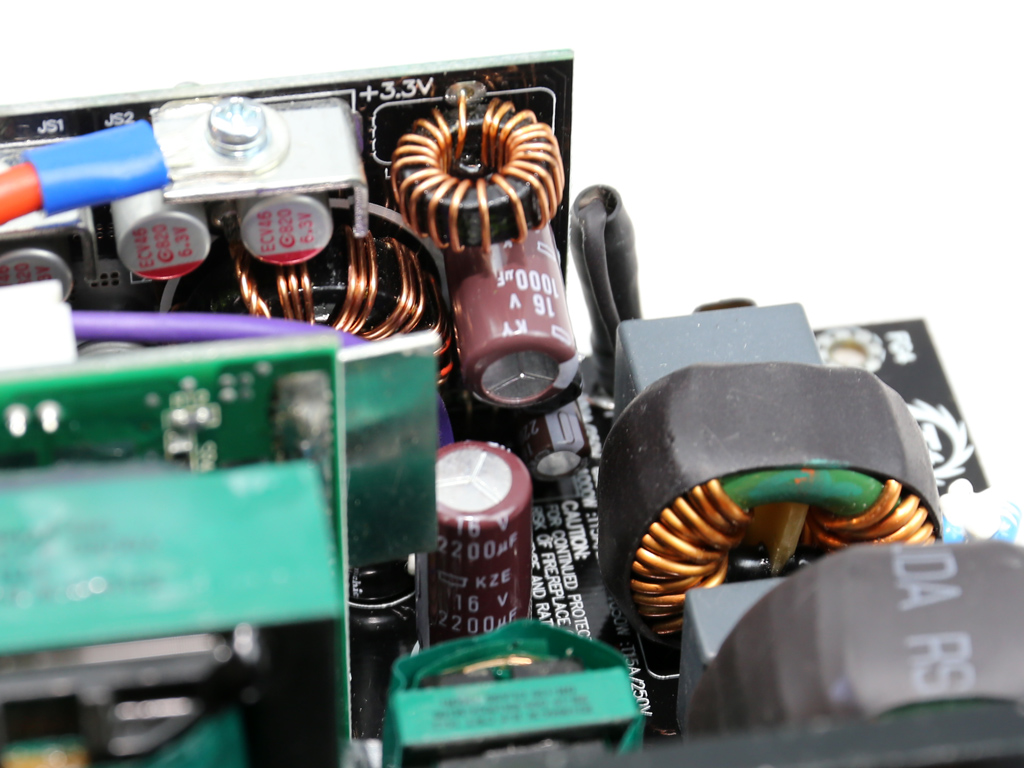
Ripple filtering is achieved by a number of Chemi-Con KZE and KY electrolytic caps. That's fairly typical for a quality PSU. However, in this price range, it would be nice if CWT used KZH caps, which have increased lifetime compared to KZE ones. Besides electrolytic caps, several polymer ones from Apaq and Elite are also used. Finally, a single Nichicon electrolytic cap filters the 5VSB output.
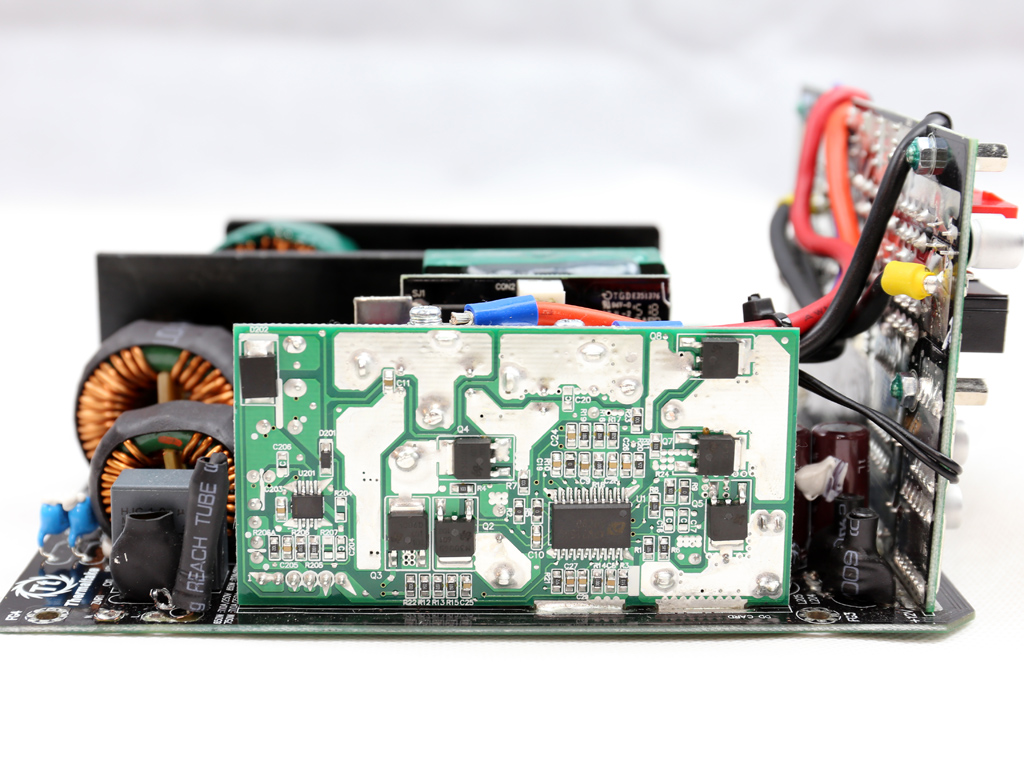
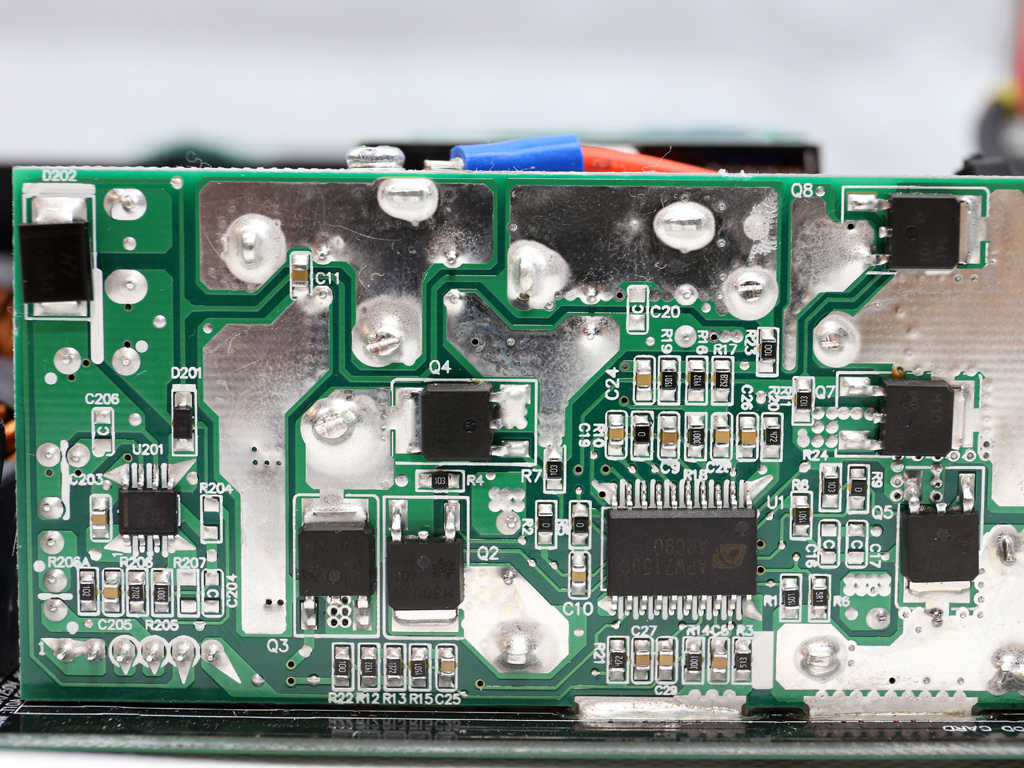
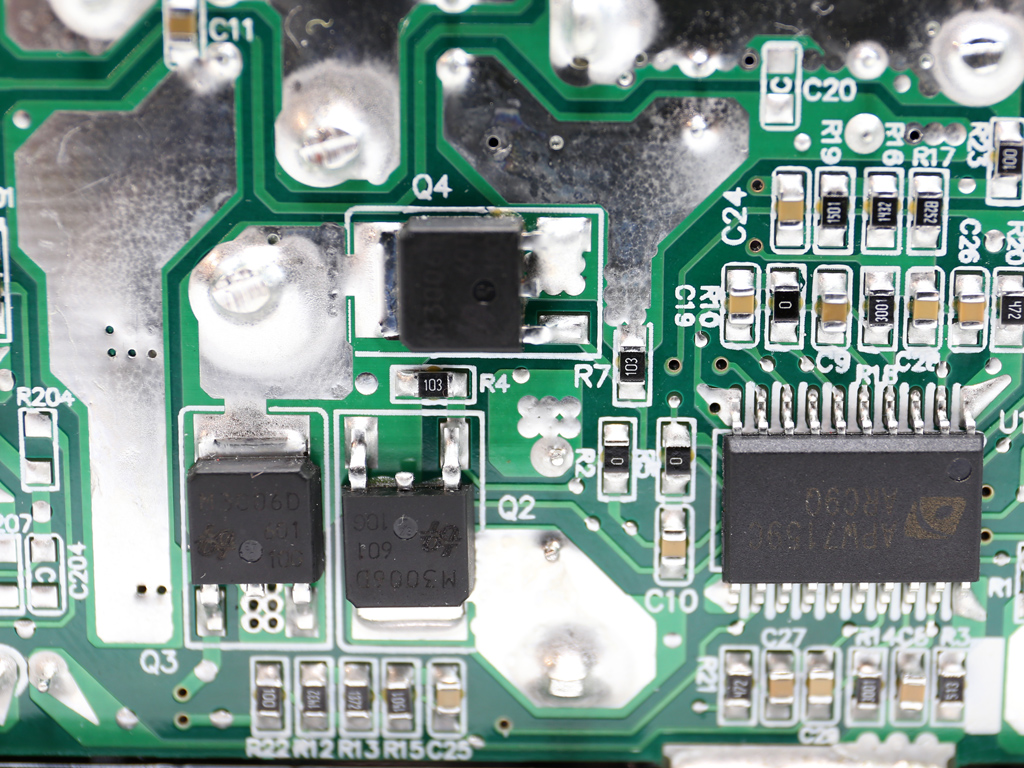
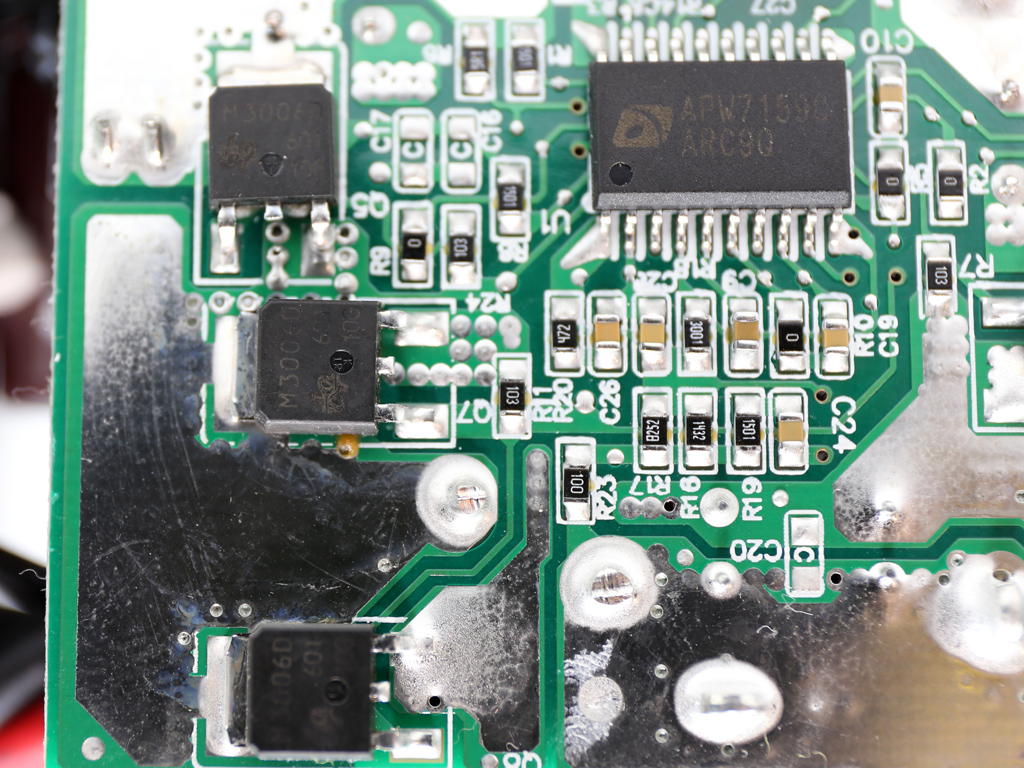
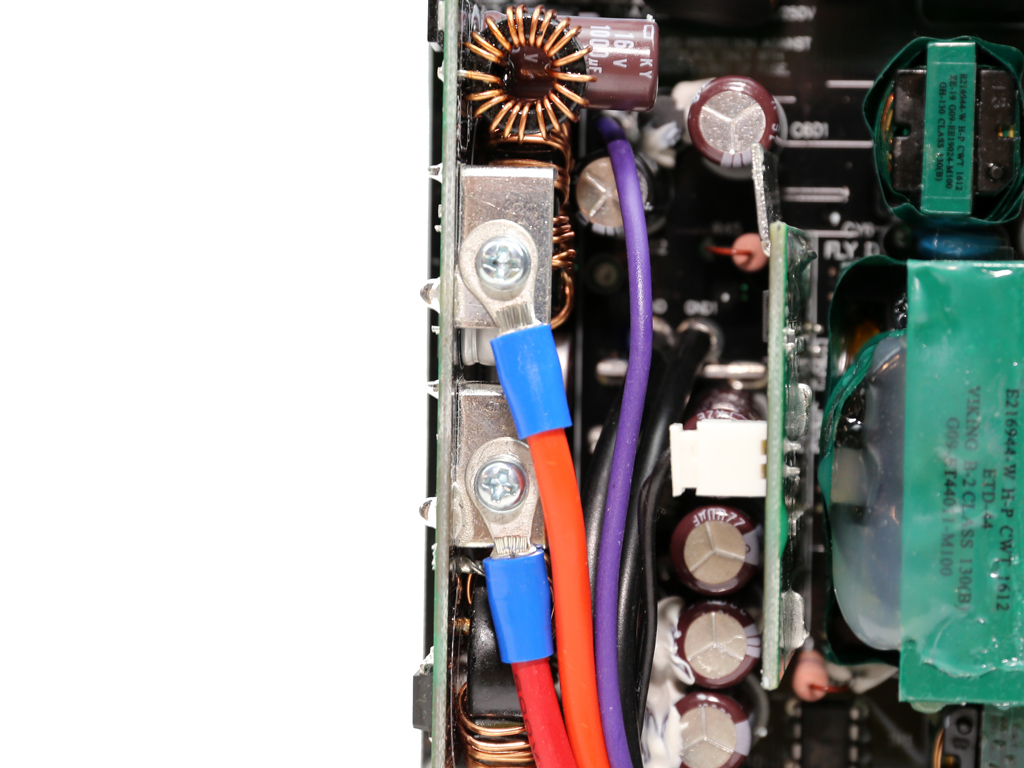
The board depicted above hosts two VRMs that handle the minor rails (5V & 3.3V). In total, six UBIQ QM3006D are used, and the common PWM controller is an Anpec APW7159C. The same board also hosts a Texas Instruments TPS5430 PWM controller.
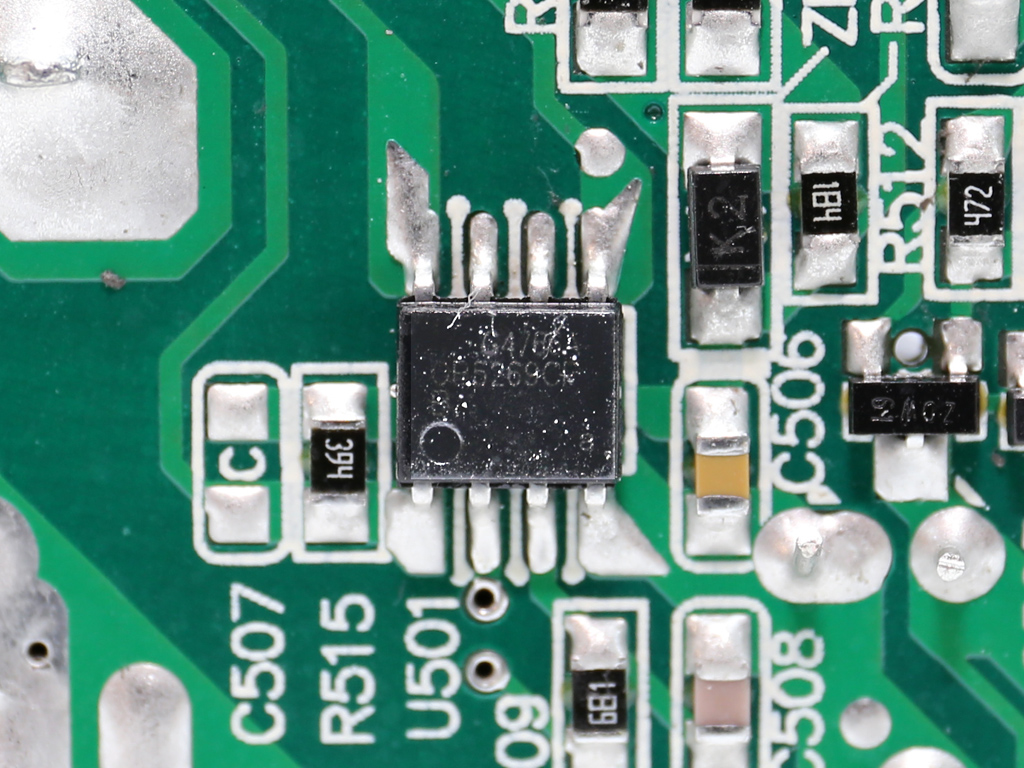
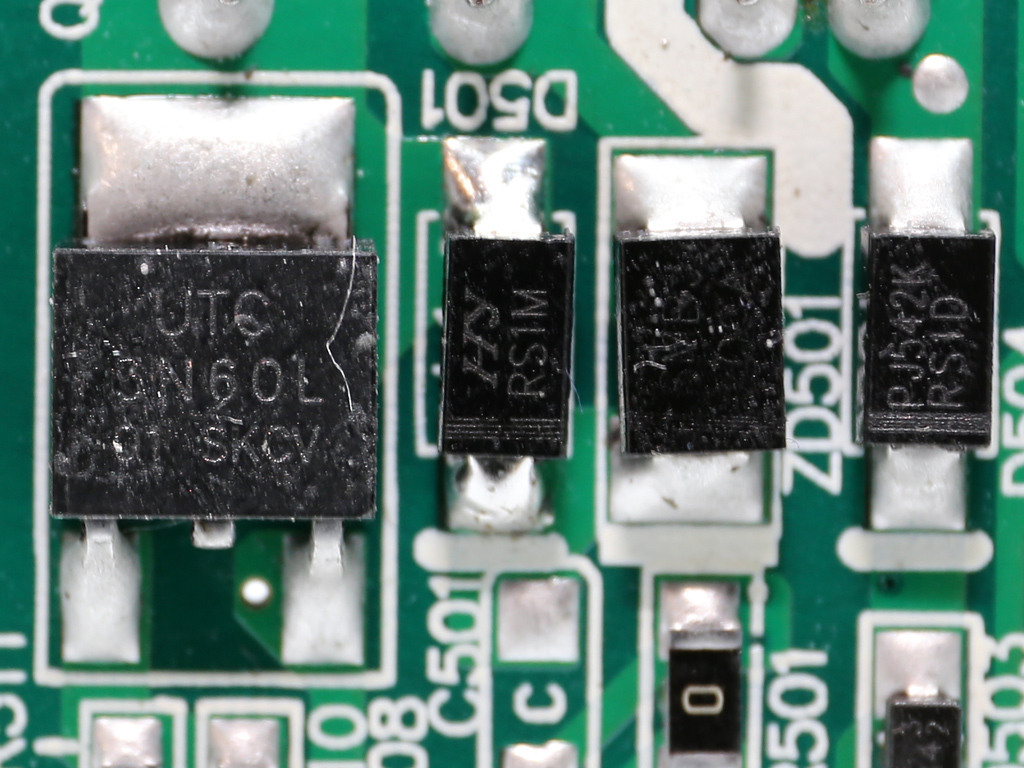
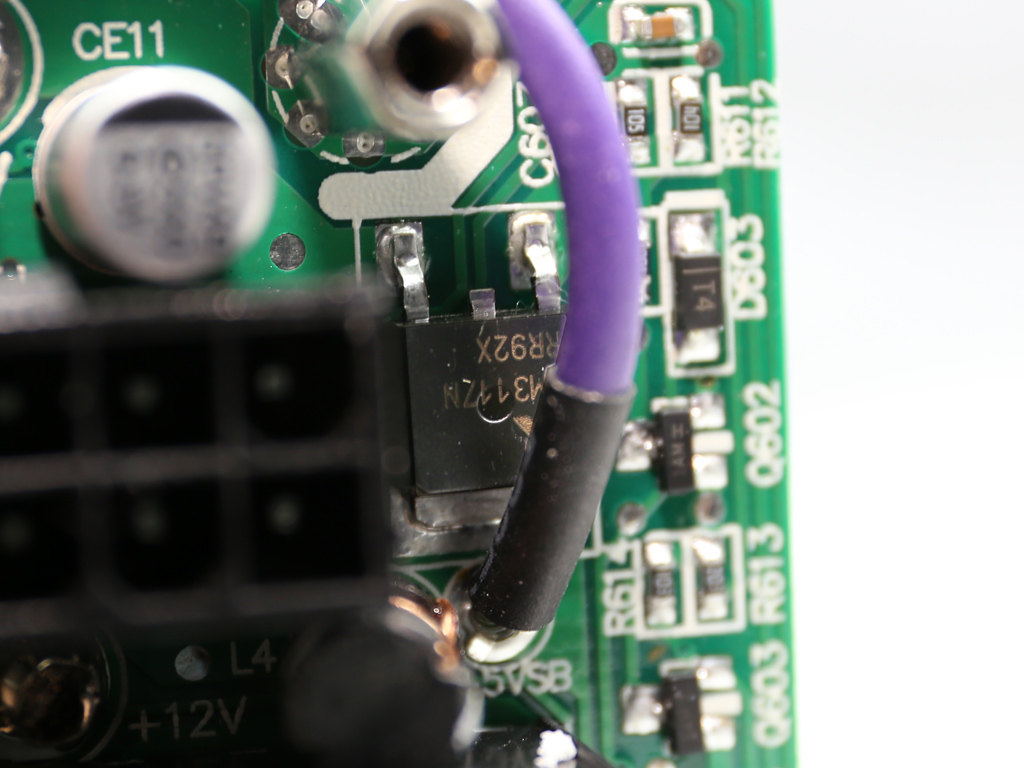
On the solder side of the mainboard is an On-Bright OB5269CP IC, which is the standby PWM controller. The 5VSB rail also uses a UTC 3N60L-TN3-R FET and a Sinopower SM3117NSUC, with the former installed on the main PCB and the latter on the modular board.
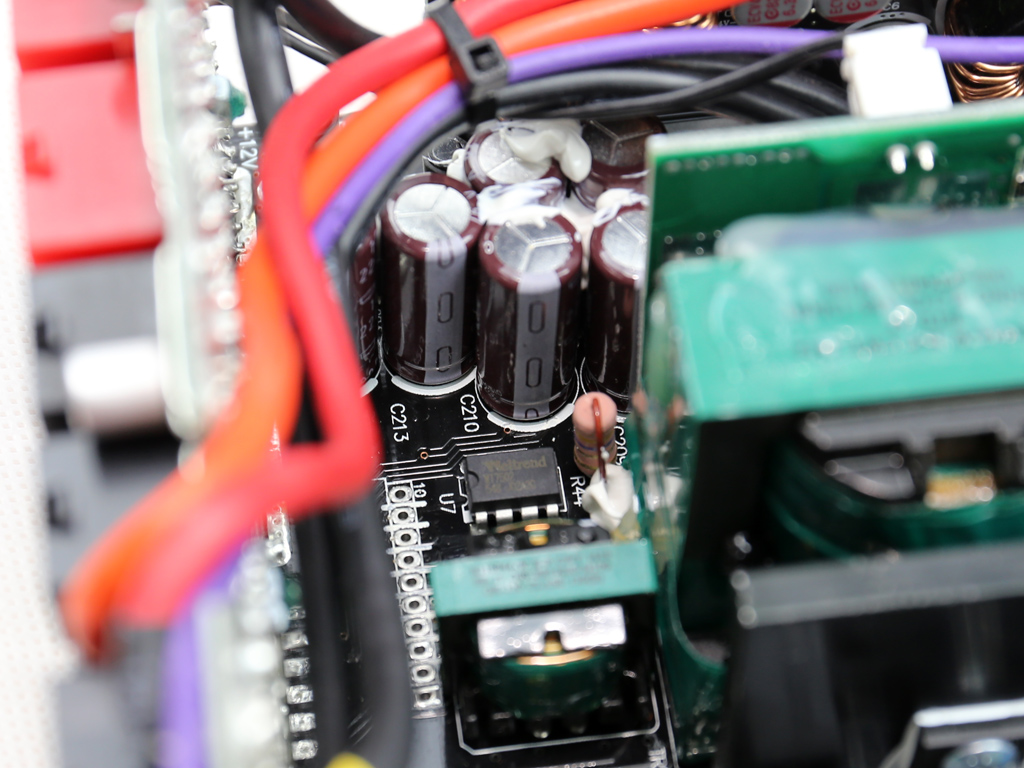
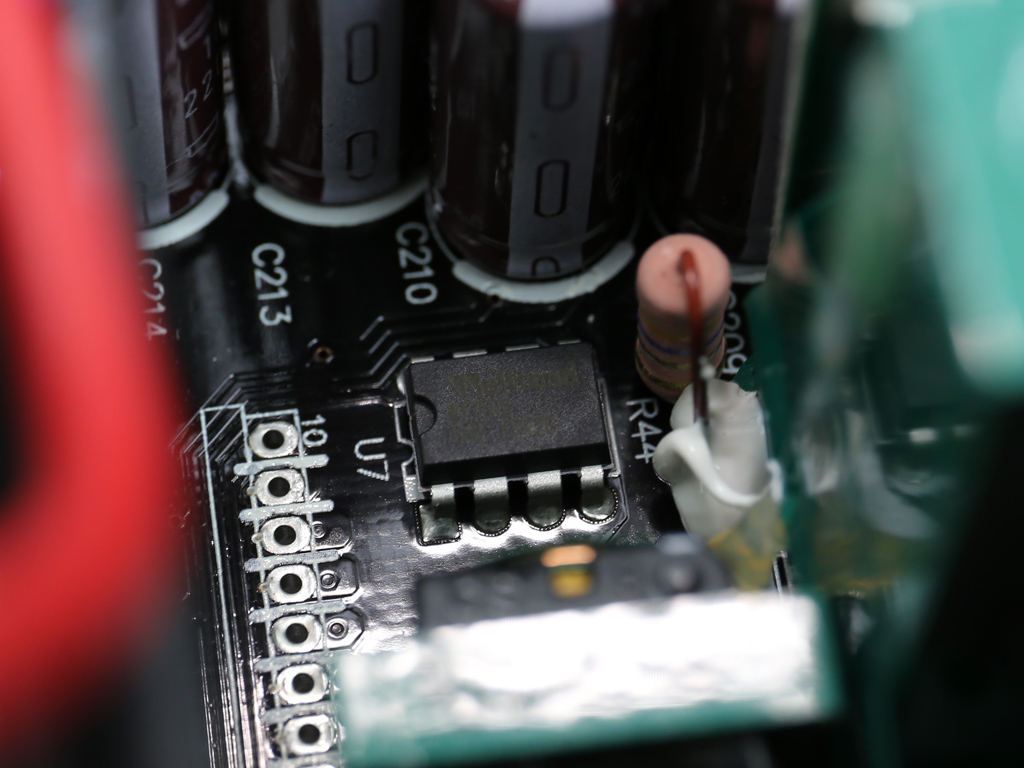
A Weltrend WT7502 supervisor IC is installed on the mainboard. This is a basic IC, so it only covers the basics and doesn't include OCP, UVP, or SCP for the +12V rail. SCP is a basic protection for all rails though, so it is implemented through another circuit.

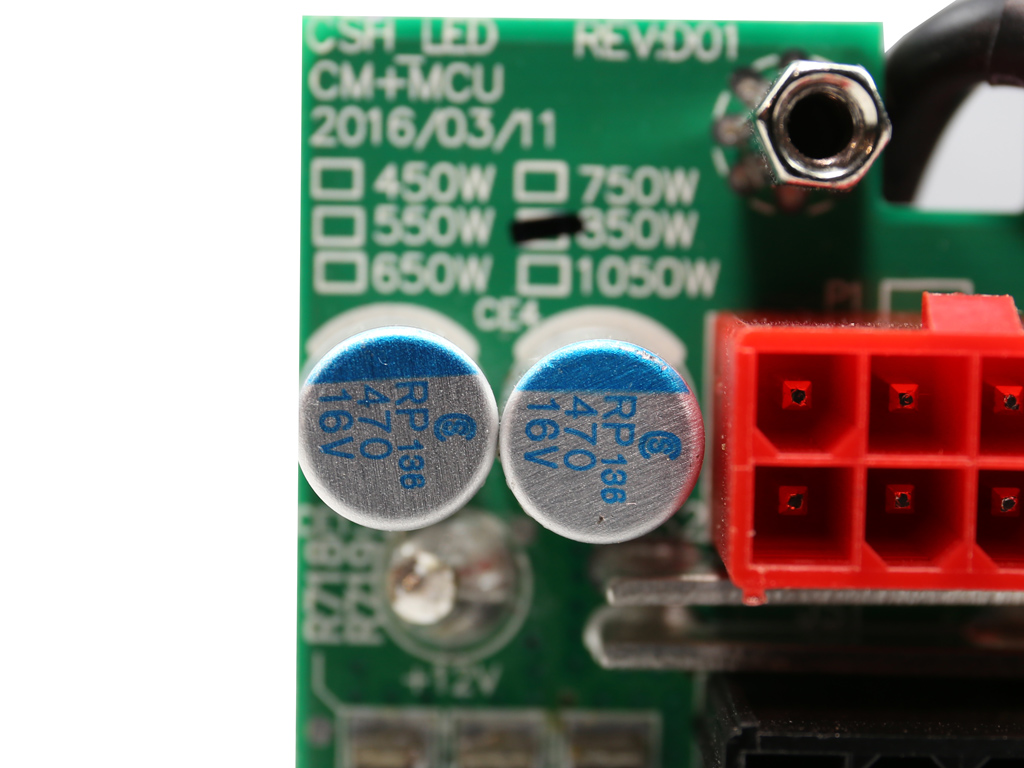
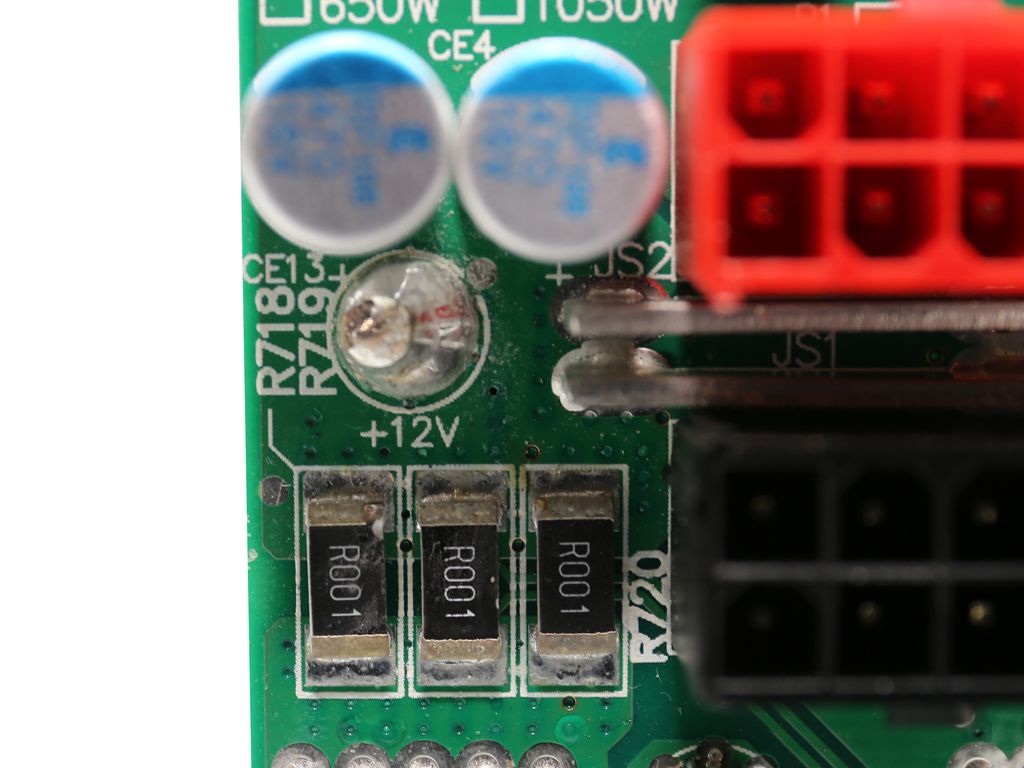
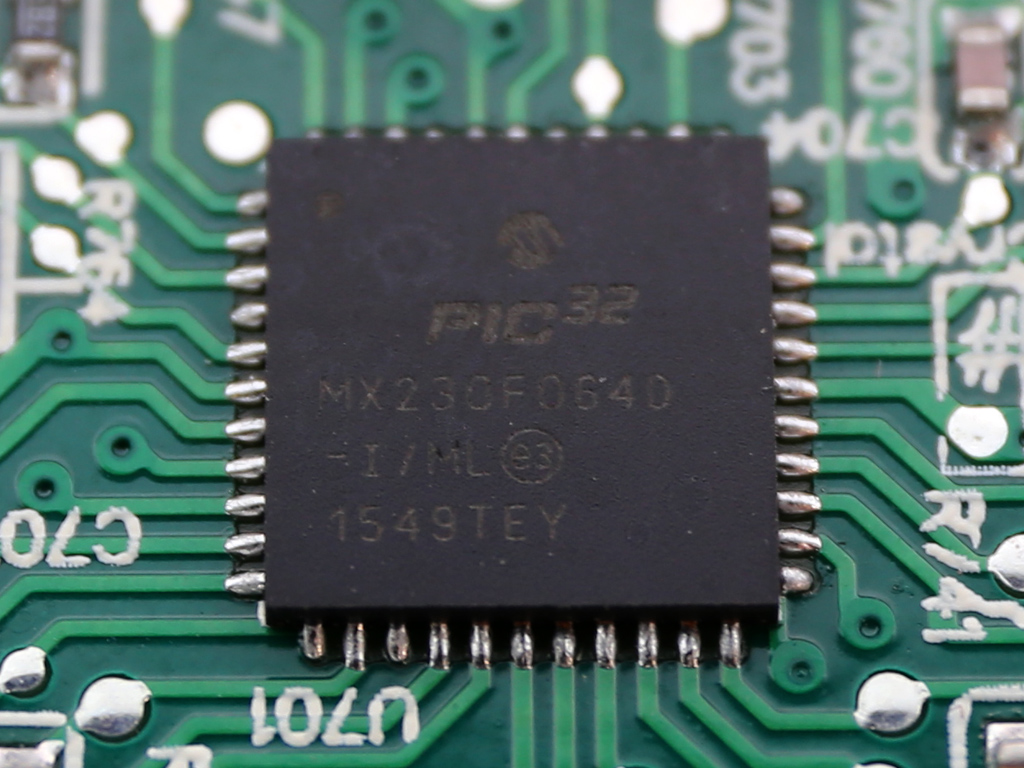
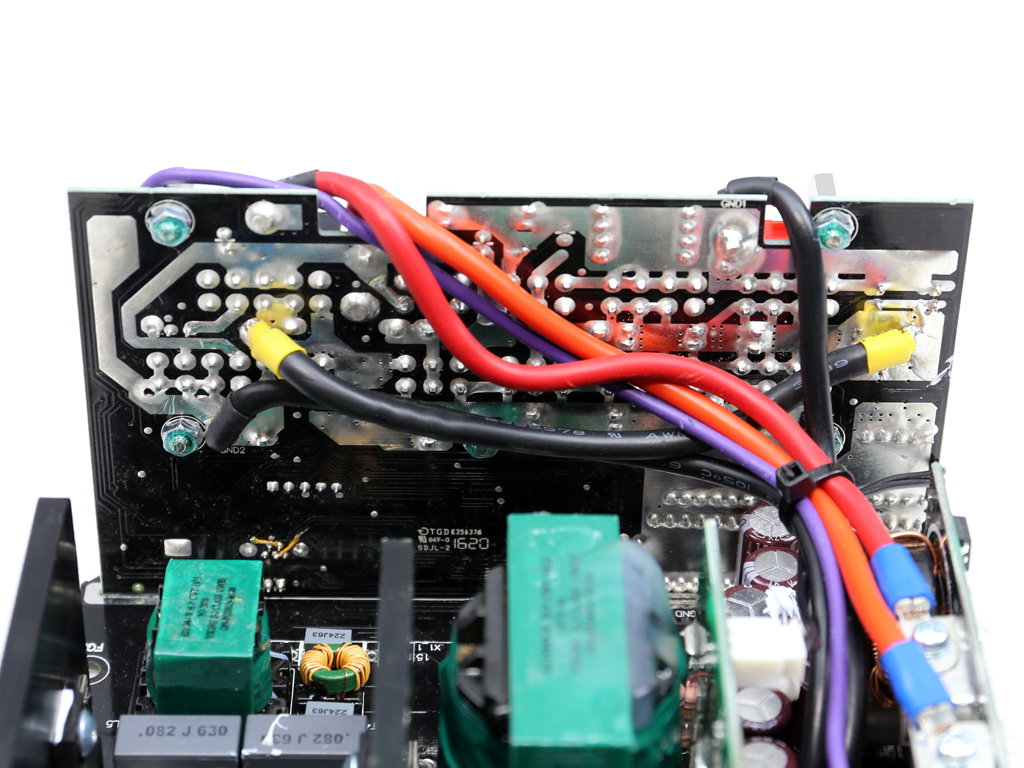
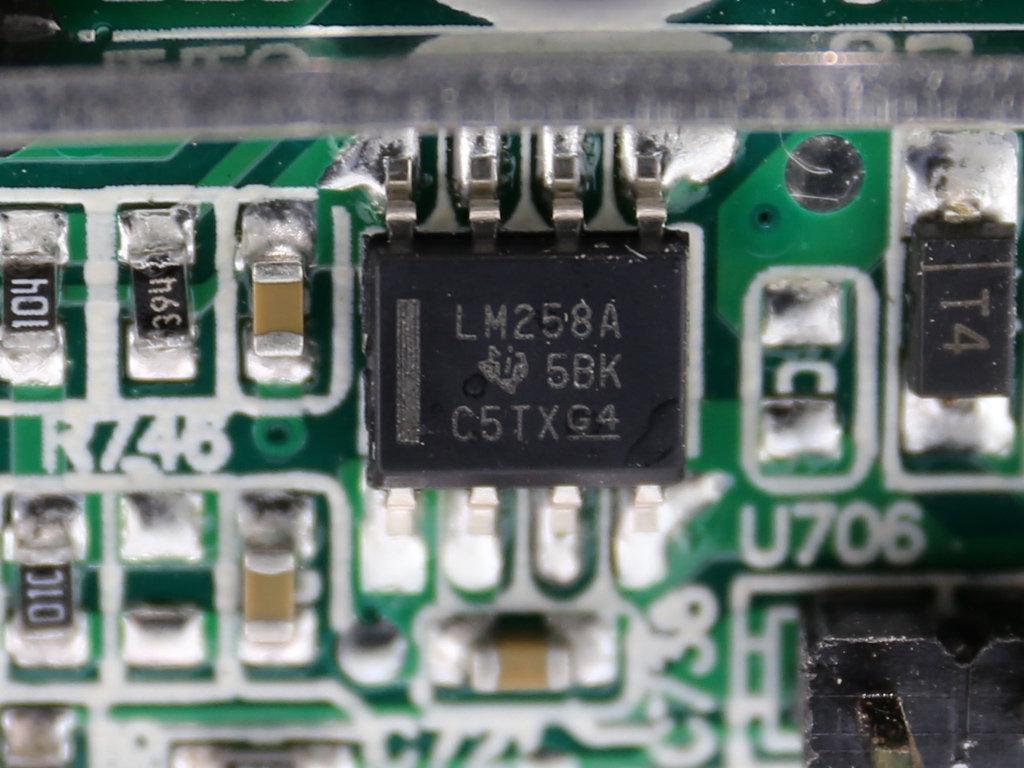
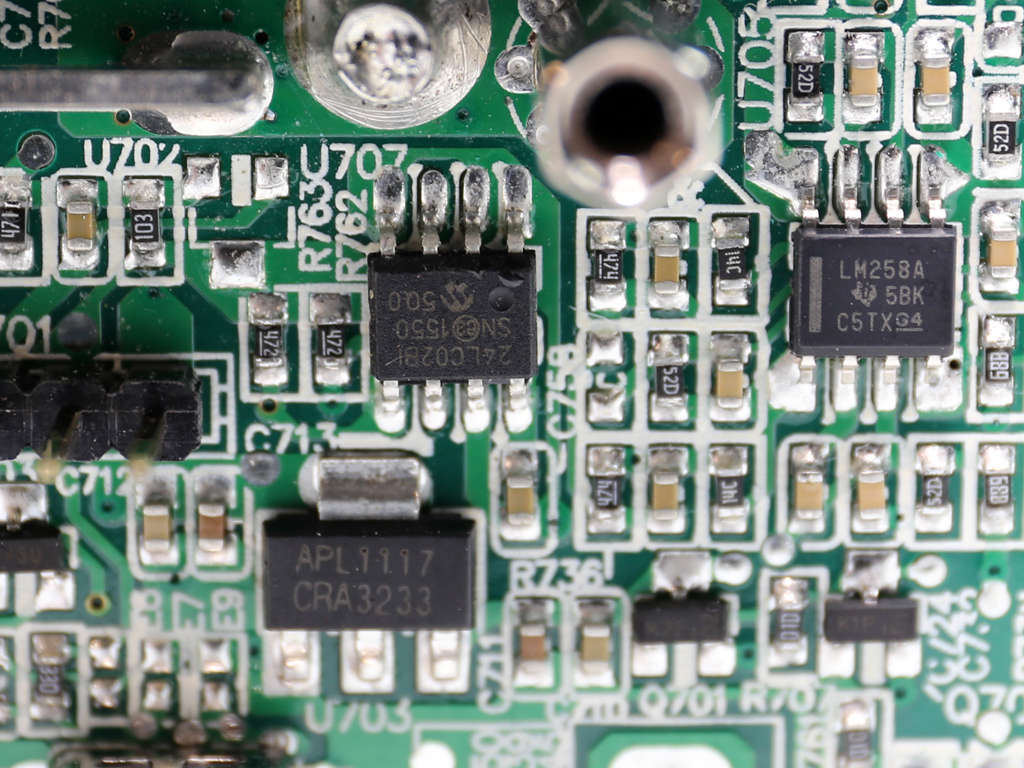
On the front side of the modular board, some Apaq and Elite polymer caps provide an extra layer of ripple filtering. The MCU responsible for communication with your motherboard is also installed there. It is a Microchip PIC32MX230F064D, and in the same area we also spot a serial EEPROM (Microchip 24LC02BI).
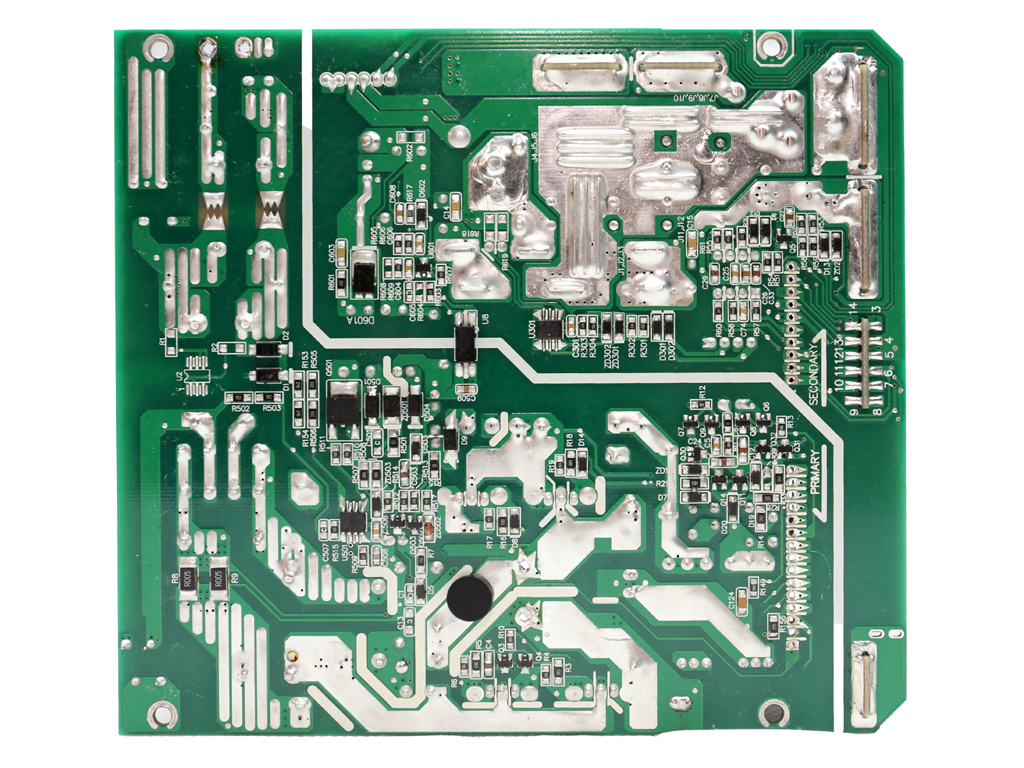
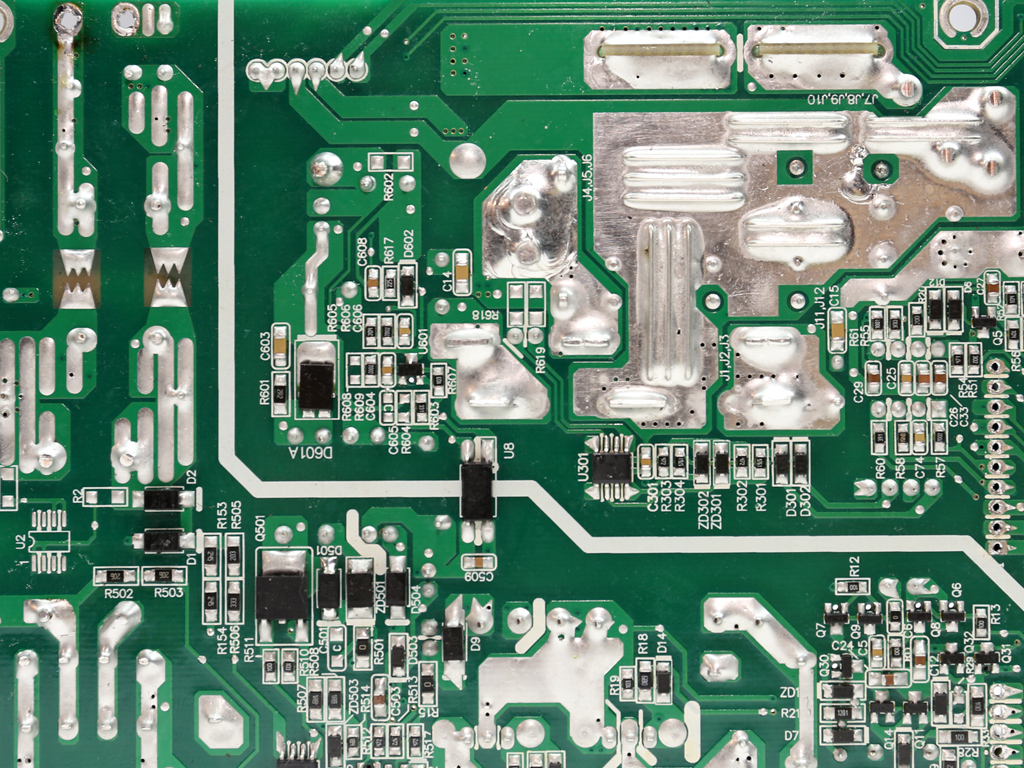
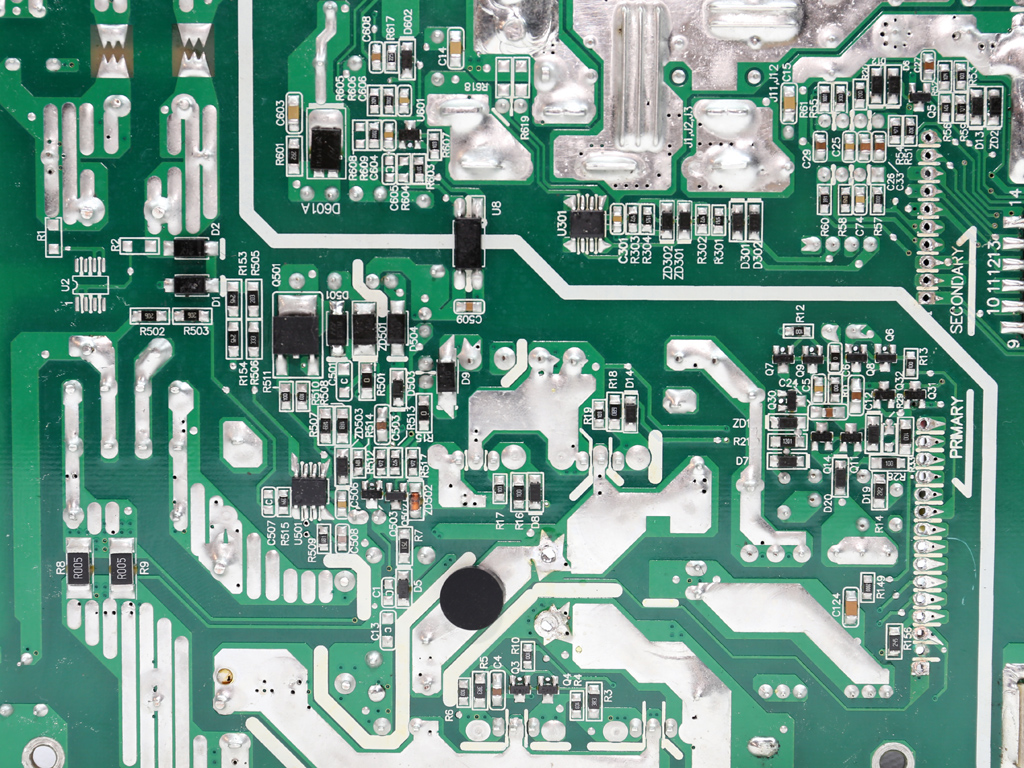
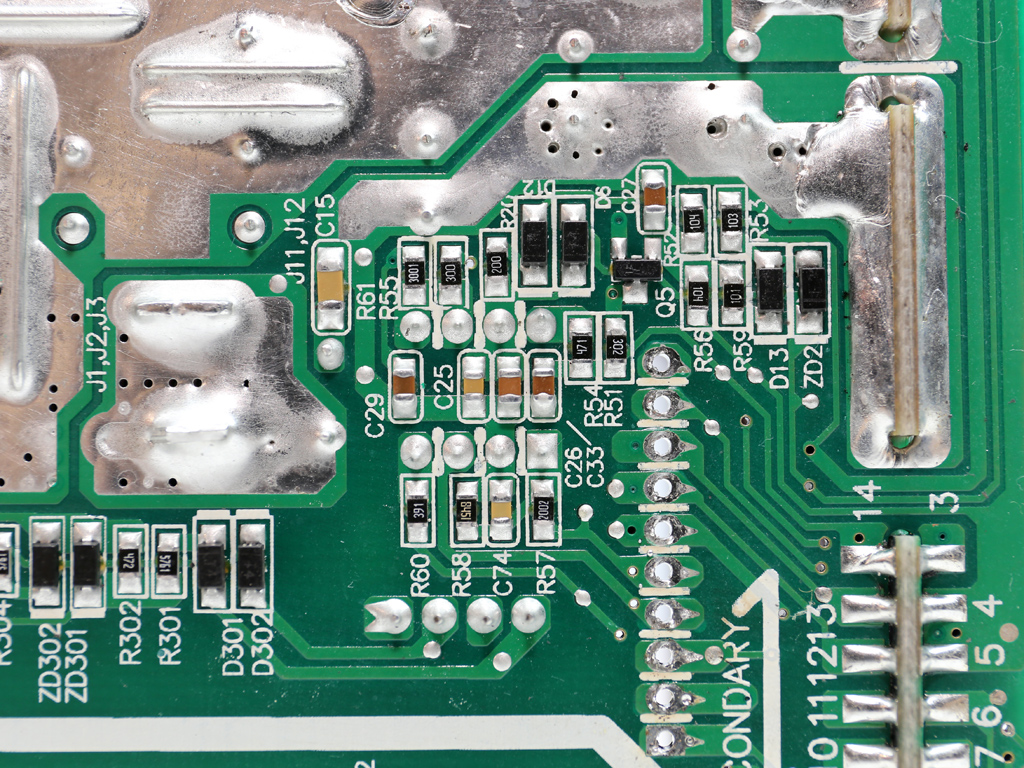
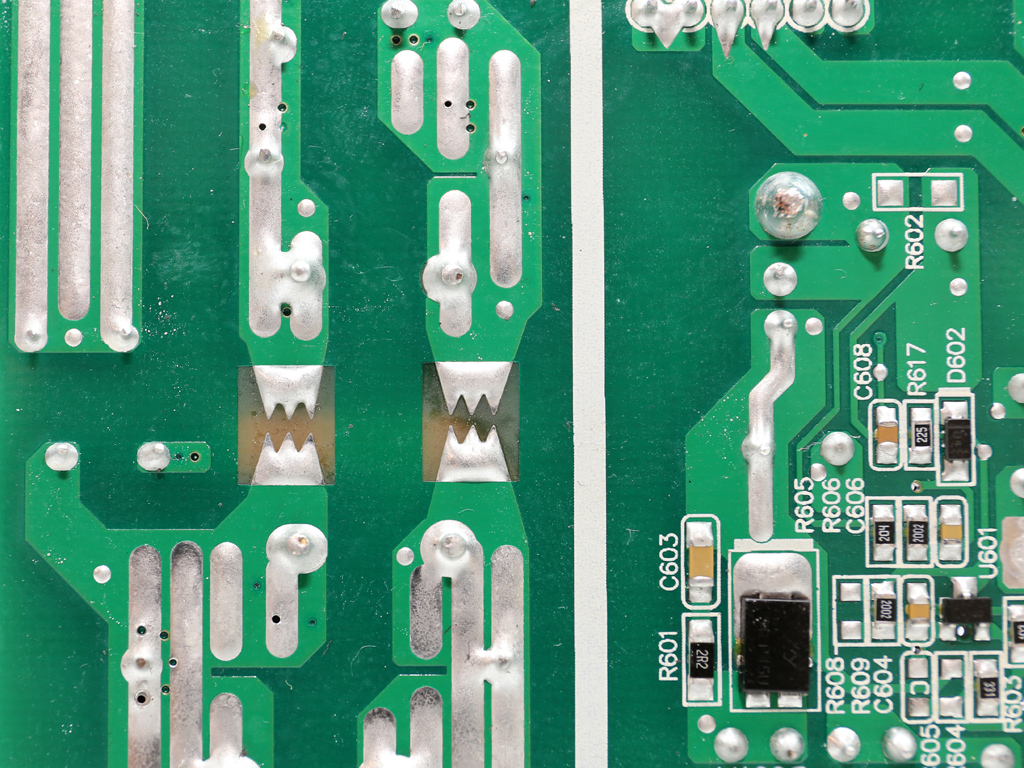
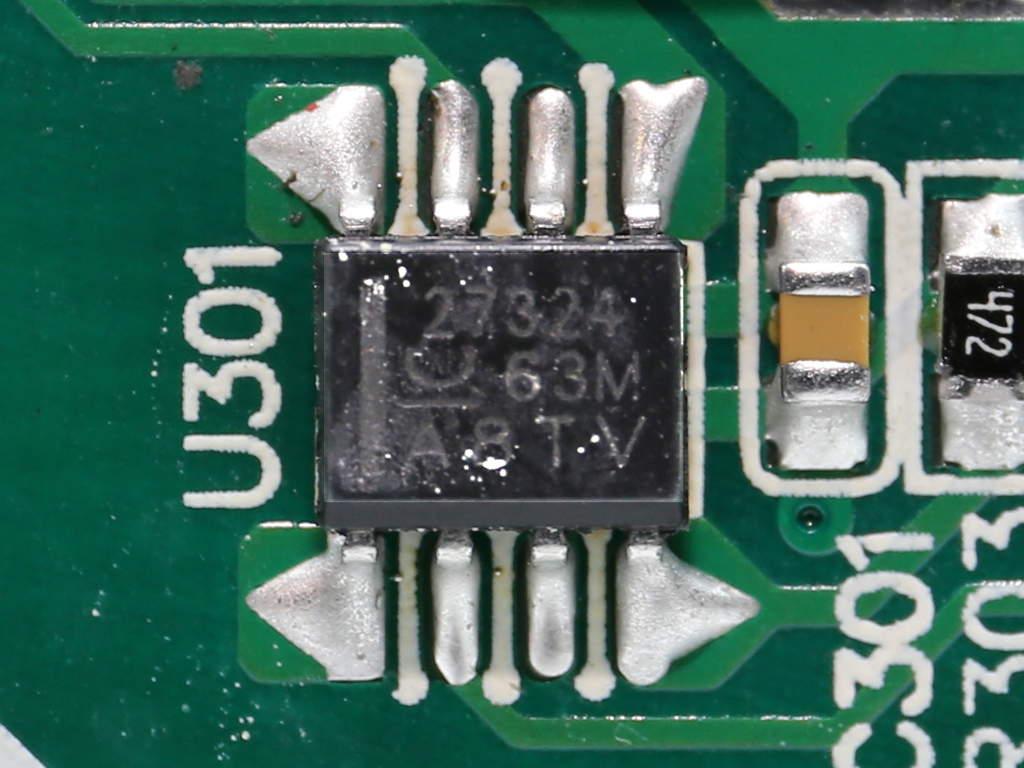
The soldering quality is quite good, which we expect from a CWT implementation. On this side we spot a Texas Instruments UCC27324 low-side driver that can control up to two FETs.
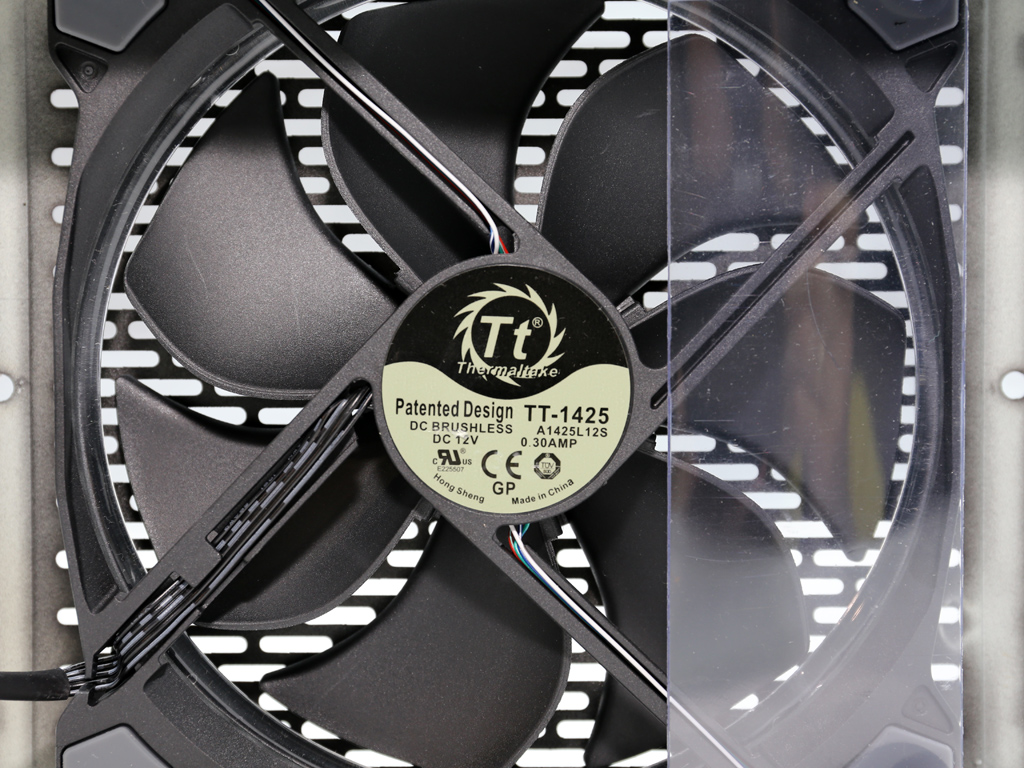
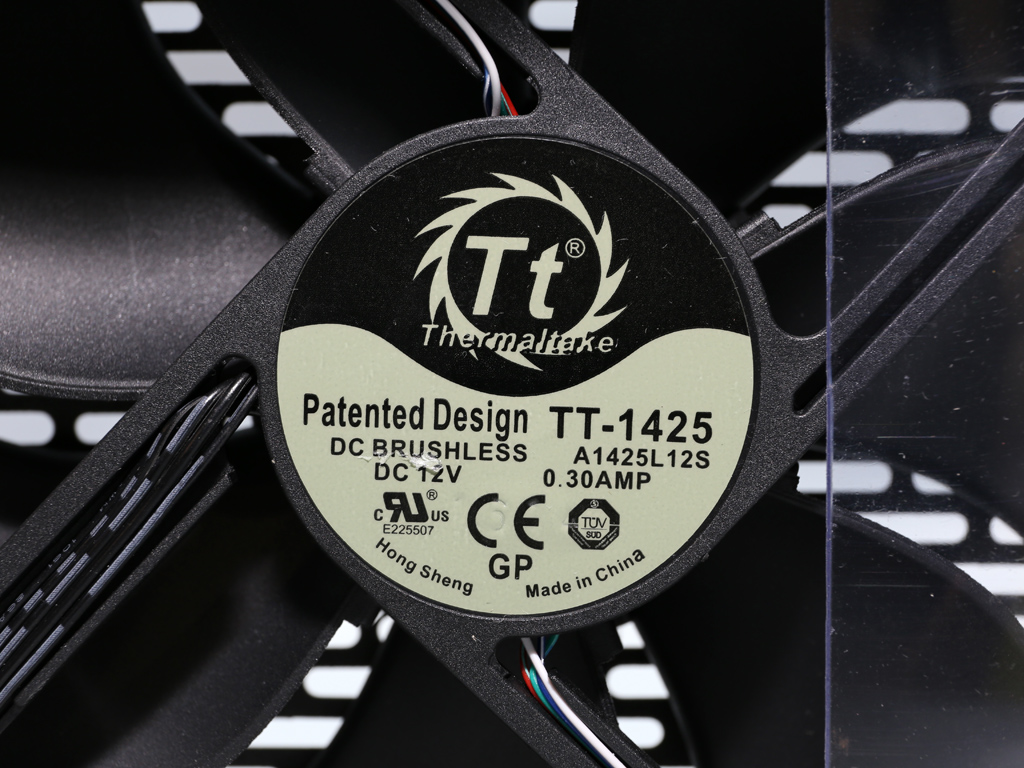
The fan is made by Hong Sheng and its model number is A1425L12S. The same exact fan is used in the TPG-1250D-T. In general, this is a mid-speed fan supported by a relaxed profile, so it manages to offer quiet operation under tough conditions. According to Thermaltake, the fan uses a hydro-dynamic bearing. Moreover, there is a LED strip installed on the fan, which can be controlled through the DPSApp.
Current page: A Look Inside And Component Analysis
Prev Page Packaging, Contents, Exterior, And Cabling Next Page Load Regulation, Hold-Up Time, And Inrush CurrentStay On the Cutting Edge: Get the Tom's Hardware Newsletter
Get Tom's Hardware's best news and in-depth reviews, straight to your inbox.

Aris Mpitziopoulos is a contributing editor at Tom's Hardware, covering PSUs.
-
powernod -It's not exactly a PSU-related question but more likely a general one.Reply
From the pictures from the monitoring software, i can notice that this software is able to measure CPU and GPU temperature. Do you have any idea if such monitoring is (relatively) accurate?
-Excellent review Aris !! -
Aris_Mp it takes readings from the system's (actually the individual components') sensors. If those are accurate then the software's readings will be accurate as well. Normally they are accurate.Reply -
Nuckles_56 That 12V transient response was certainly interesting, I don't think I've seen one do anything like that beforeReply -
turkey3_scratch Reply18886218 said:That 12V transient response was certainly interesting, I don't think I've seen one do anything like that before
Do what? -
Nuckles_56 Reply18886236 said:18886218 said:That 12V transient response was certainly interesting, I don't think I've seen one do anything like that before
Do what?
Go and plummet back down to almost 0V during the test -
turkey3_scratch Reply18887052 said:18886236 said:18886218 said:That 12V transient response was certainly interesting, I don't think I've seen one do anything like that before
Do what?
Go and plummet back down to almost 0V during the test
I don't think you're reading the transient response graph properly. It's not a measure of voltage but a measure of ripple (well, technically that is a measure of voltage but it's more a measure of instantaneous offsets of an average, or a highly zoomed in sector).
That or I am just missing something. I probably am. Not sure what I'm missing though. Forgive my ignorance. -
Nuckles_56 For this graph http://media.bestofmicro.com/ext/aHR0cDovL21lZGlhLmJlc3RvZm1pY3JvLmNvbS9TLzYvNjIxNzk4L29yaWdpbmFsLzEydl9vZmYuanBn/r_600x450.jpg I hope that I'm not reading it that badly wrongReply -
sparkyman215 Fantastic review Aris! I absolutely love reading in depth articles about anything. Terrible PSU for the price, but it's an awesome review. Congrats!Reply